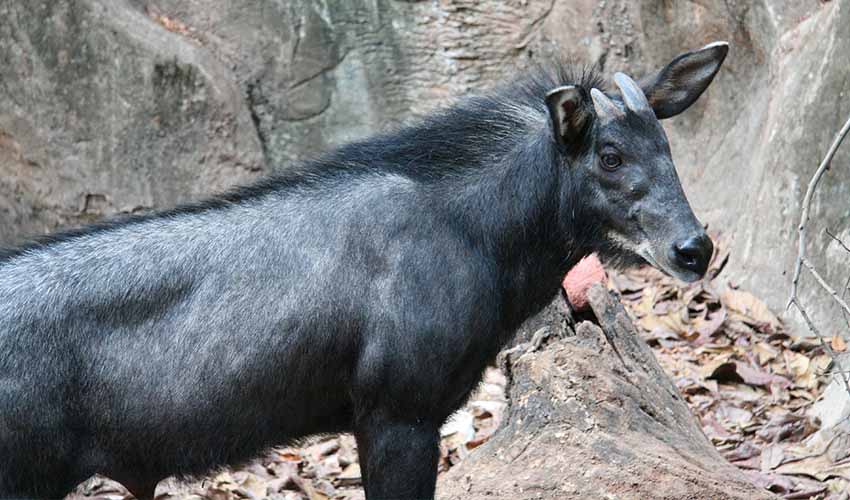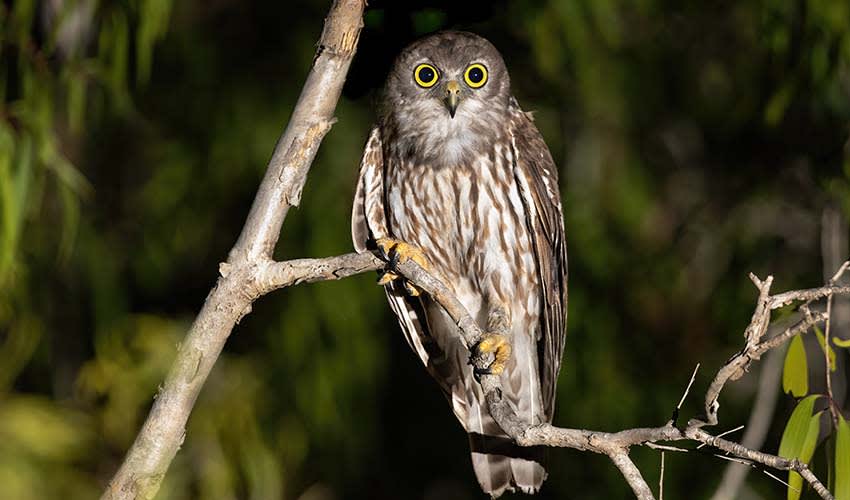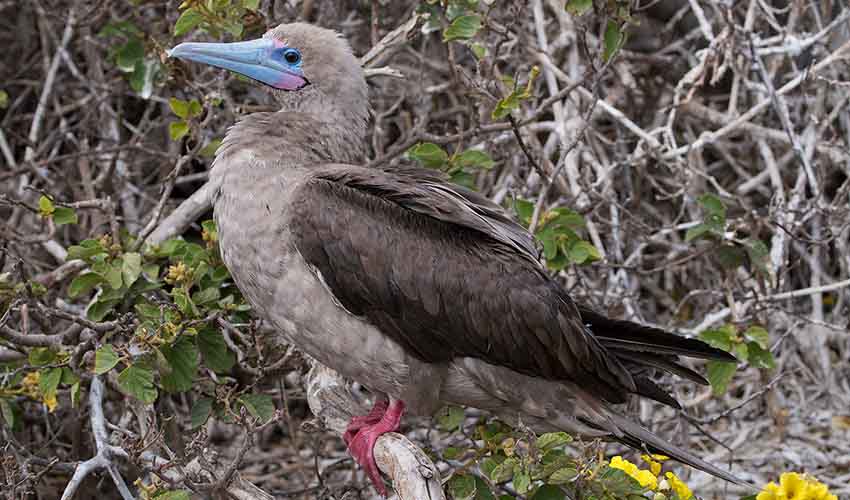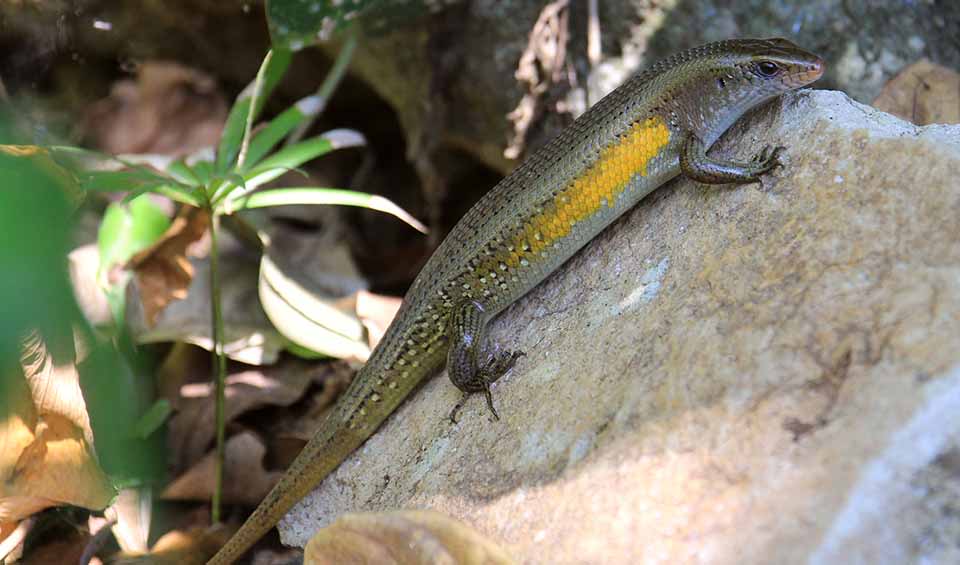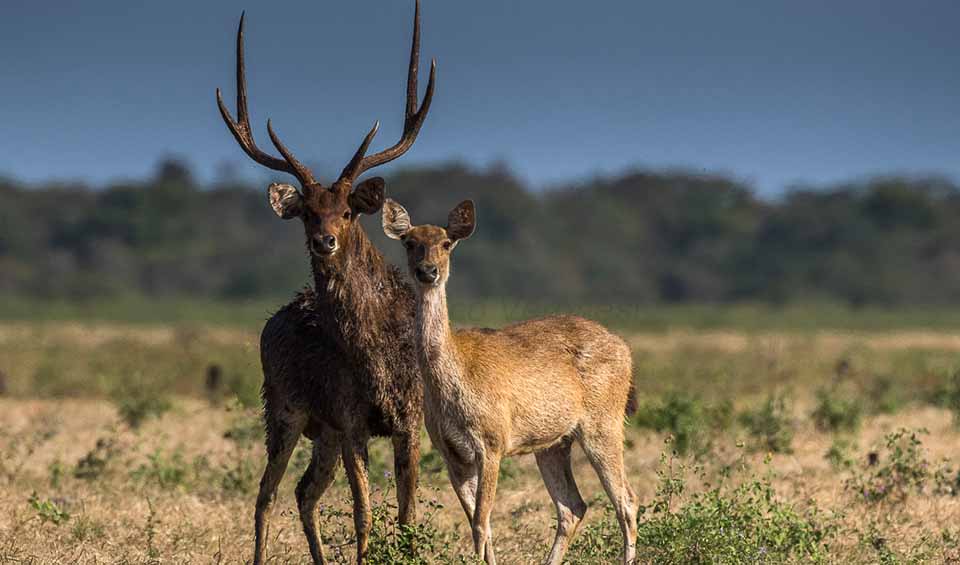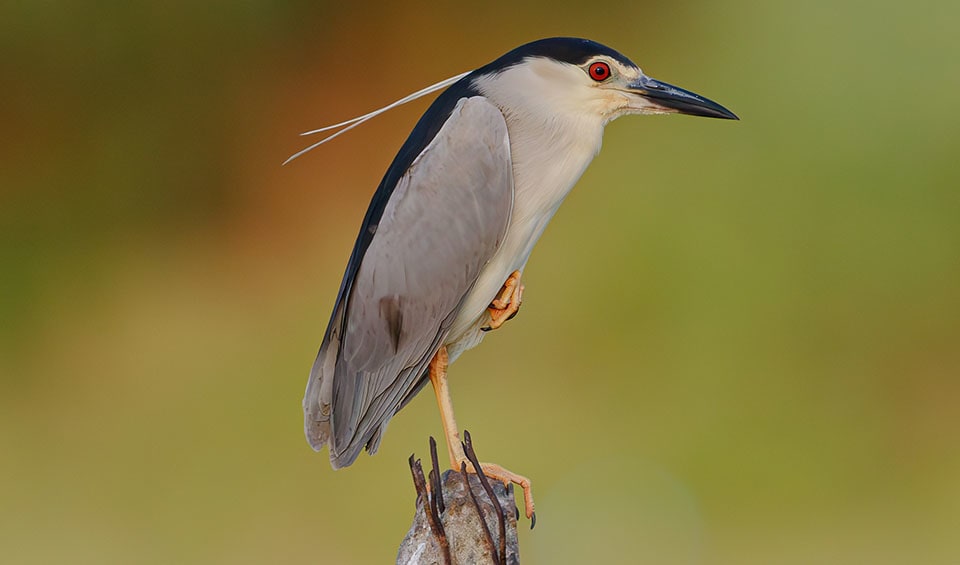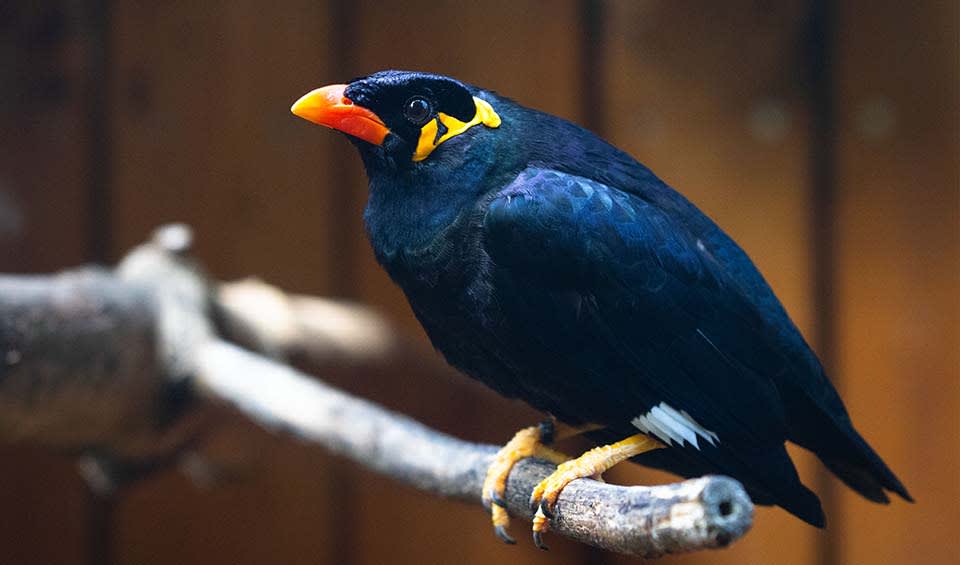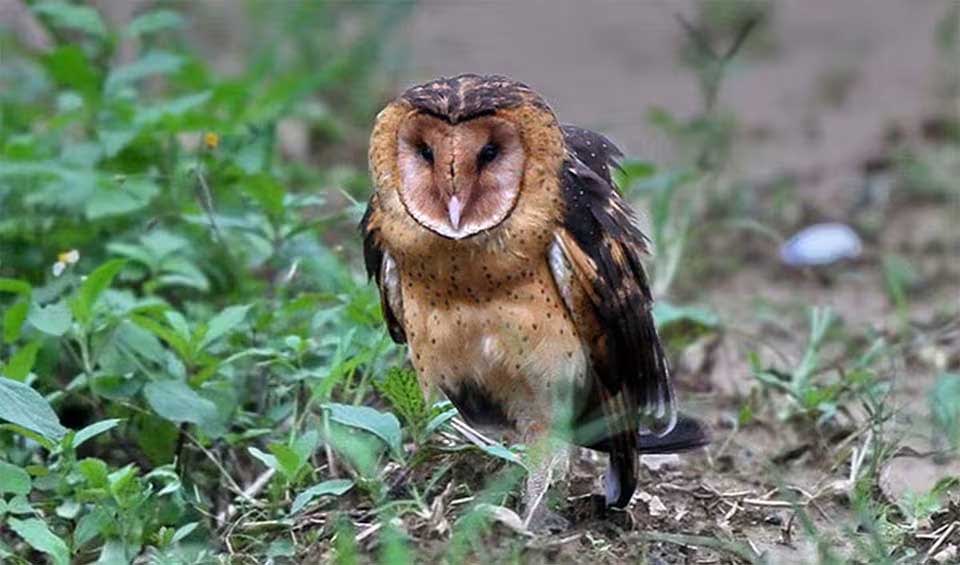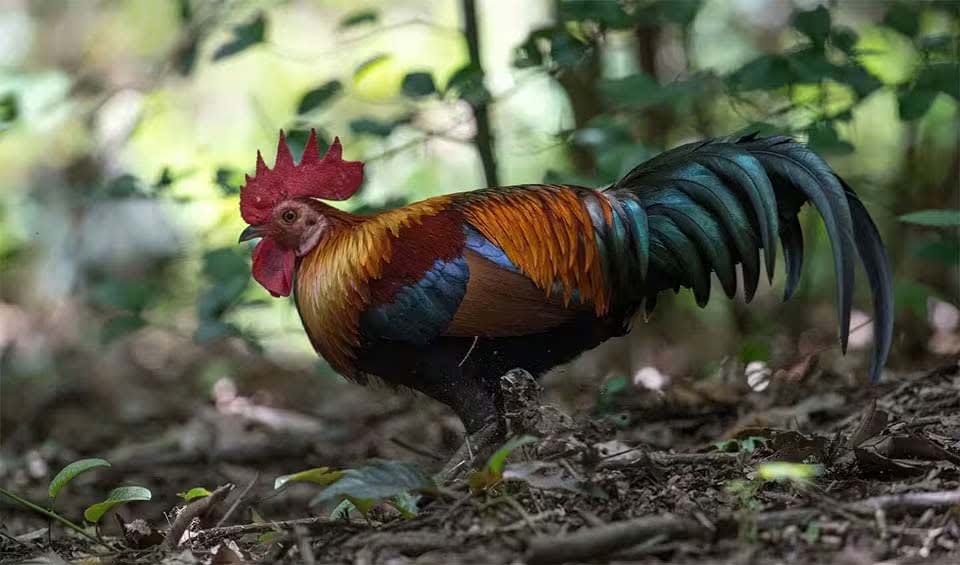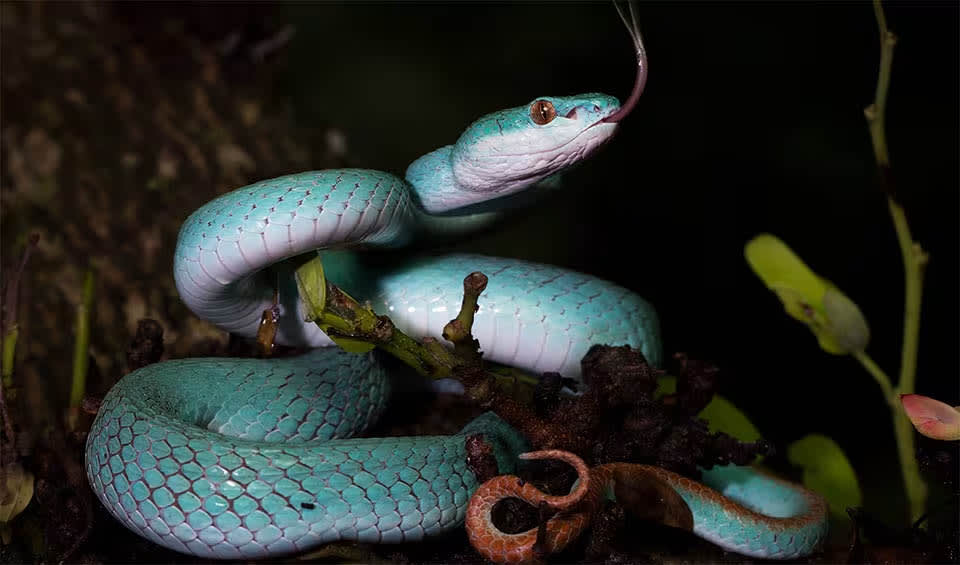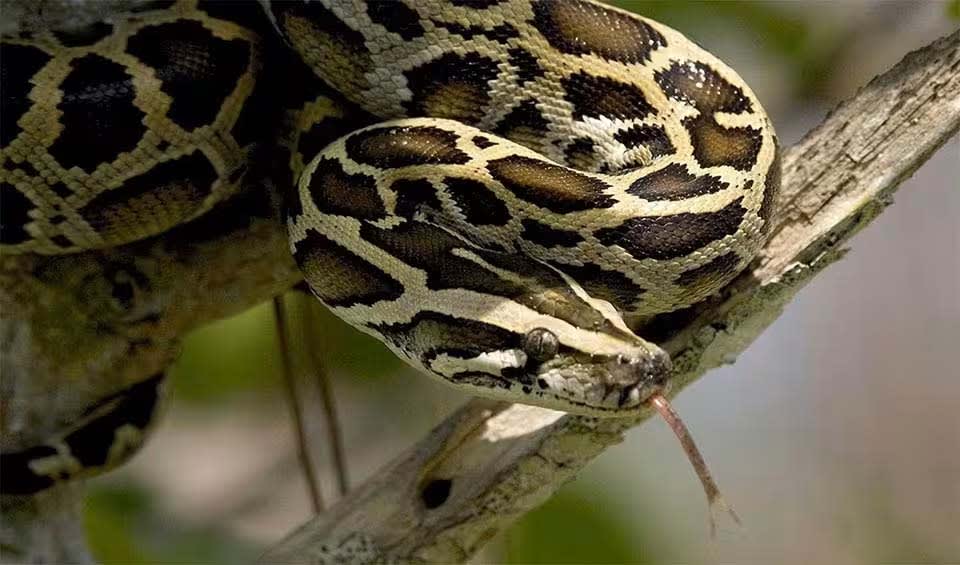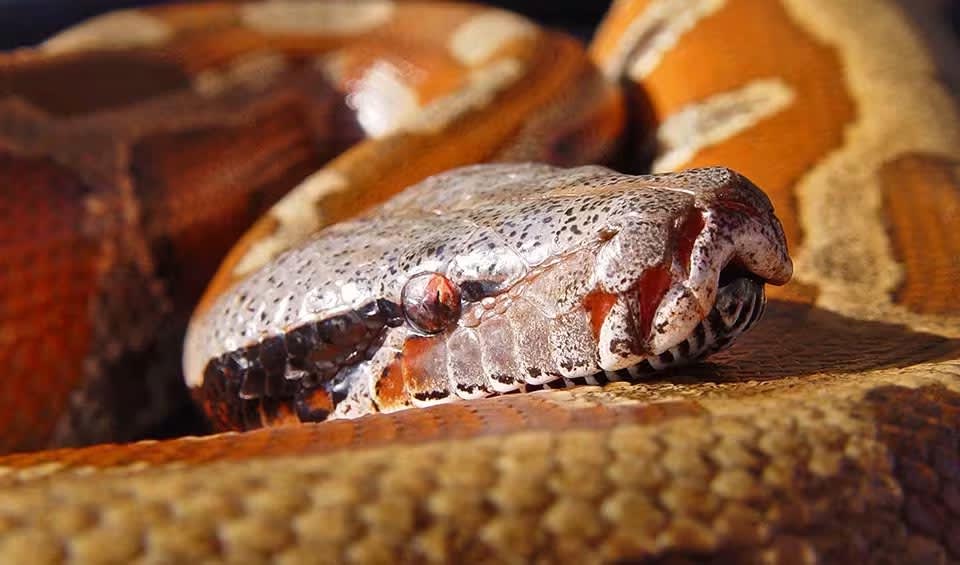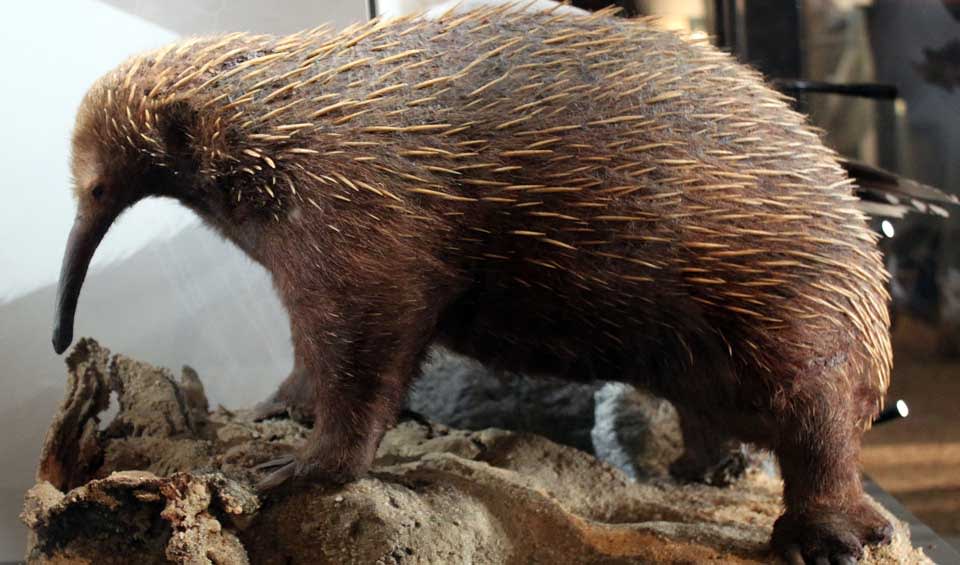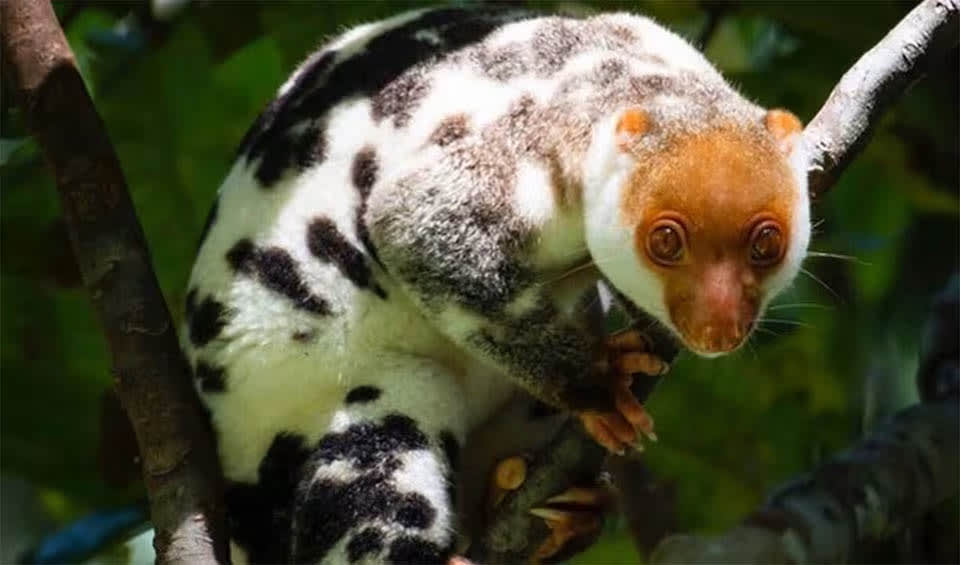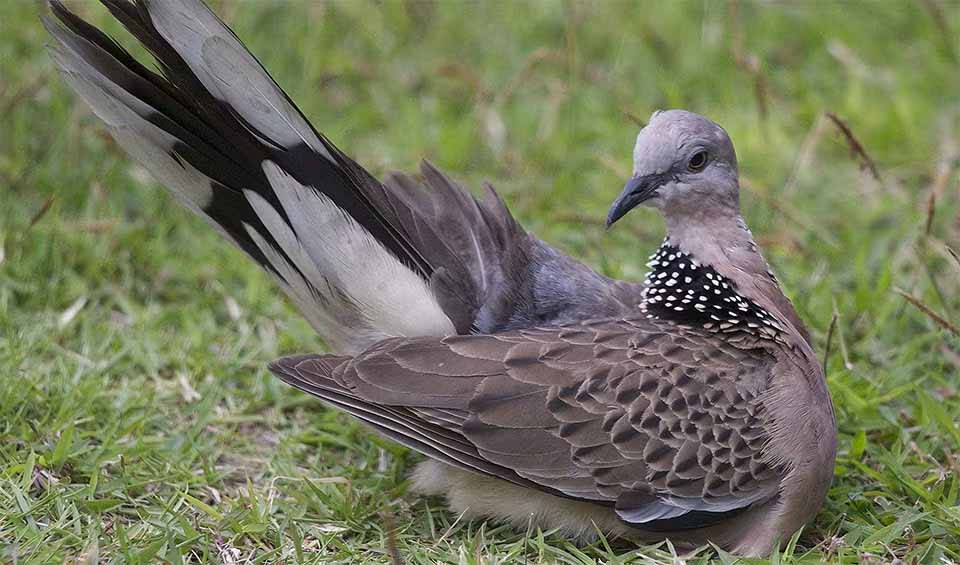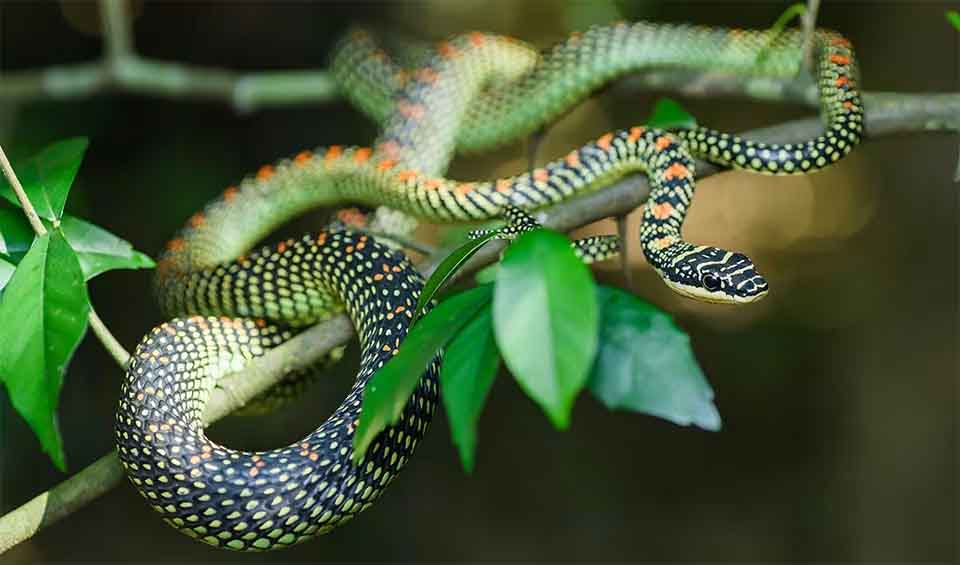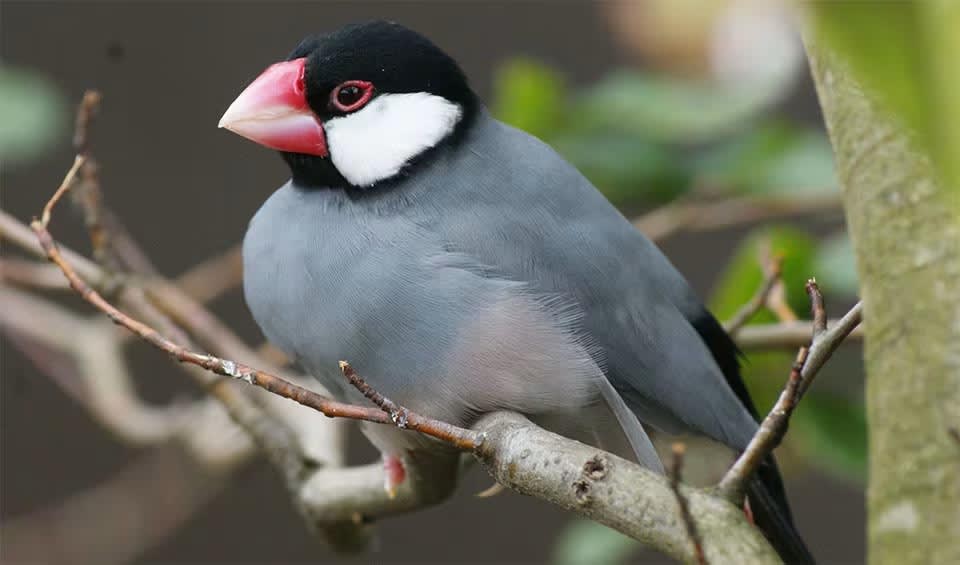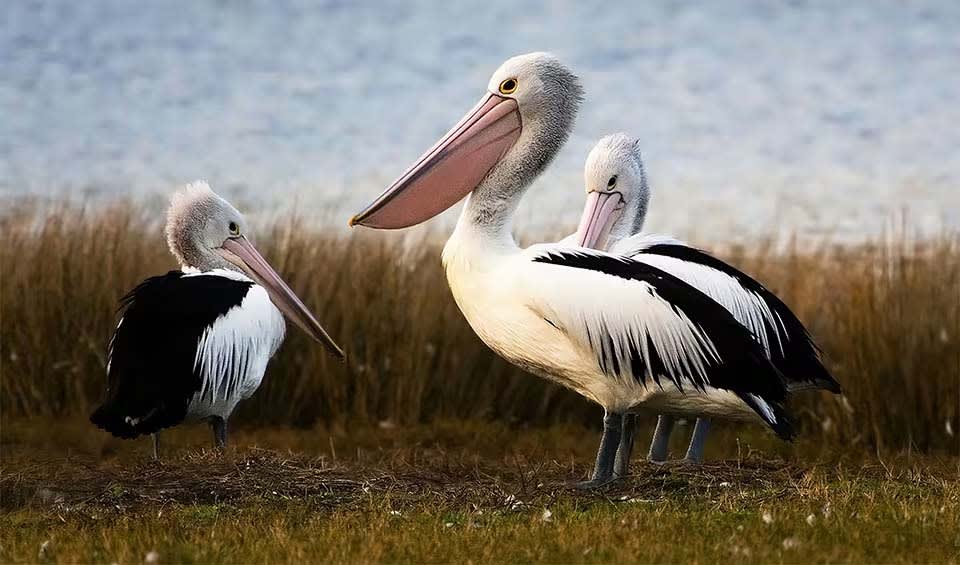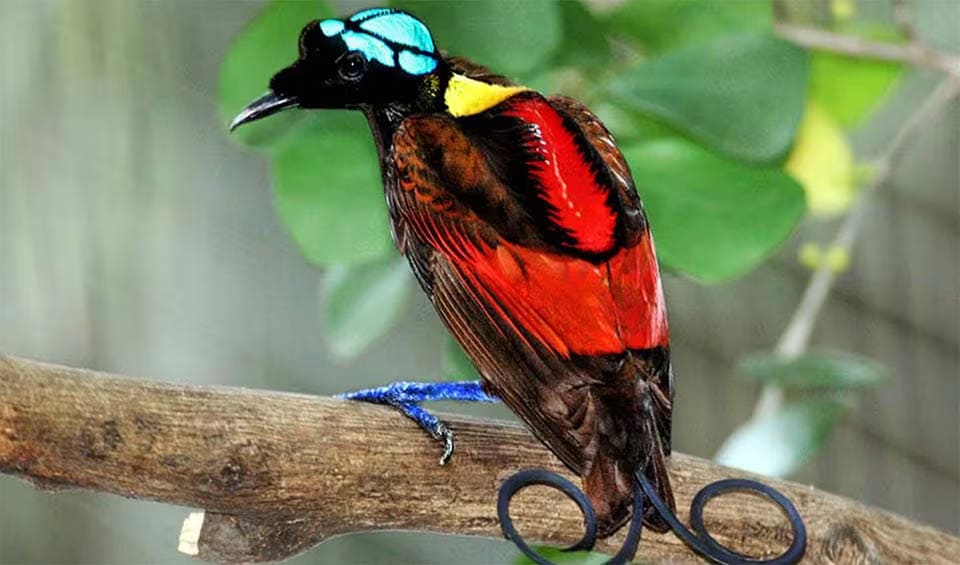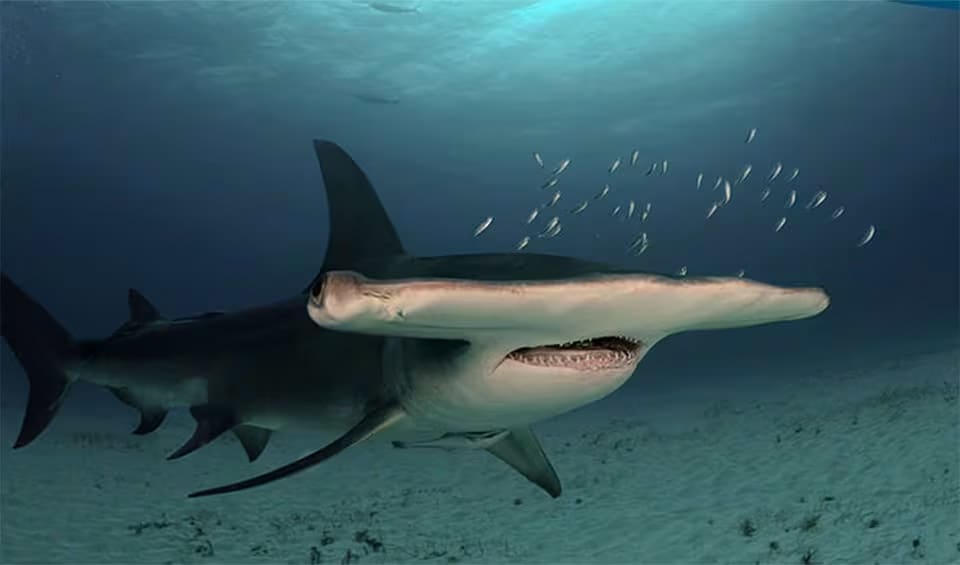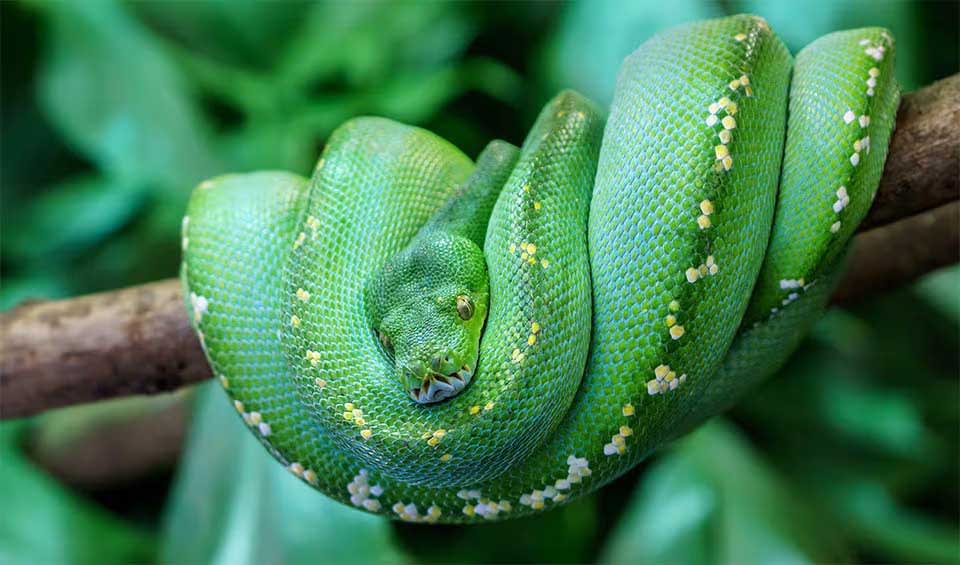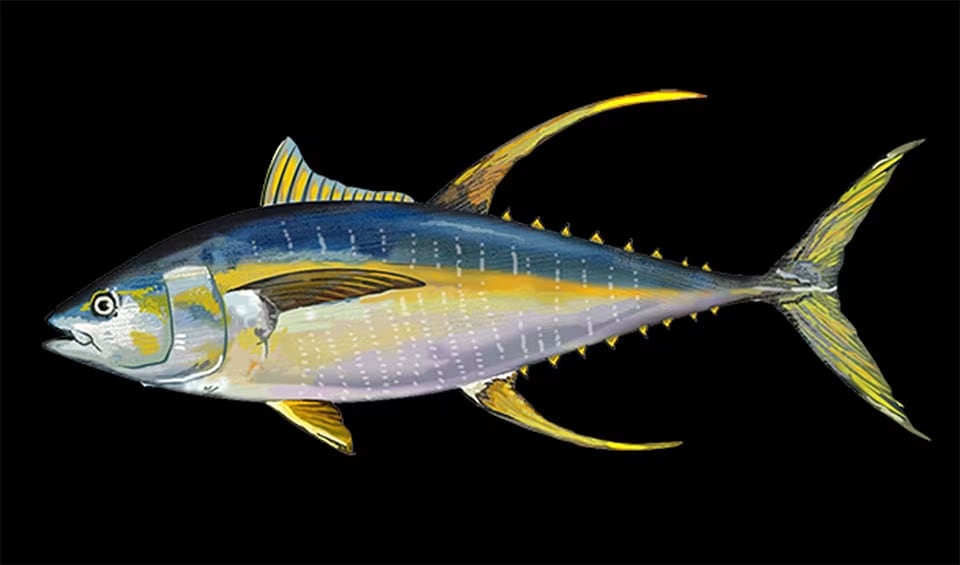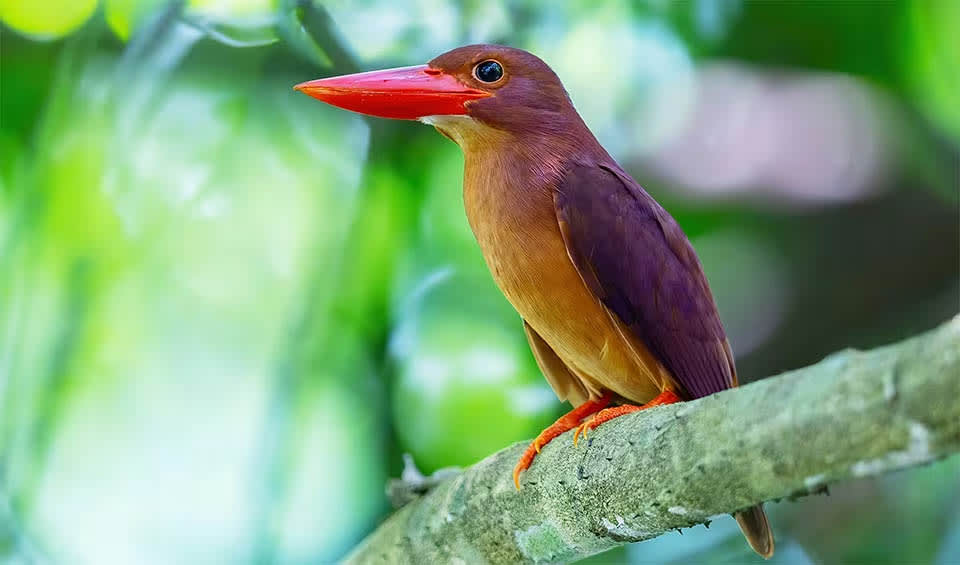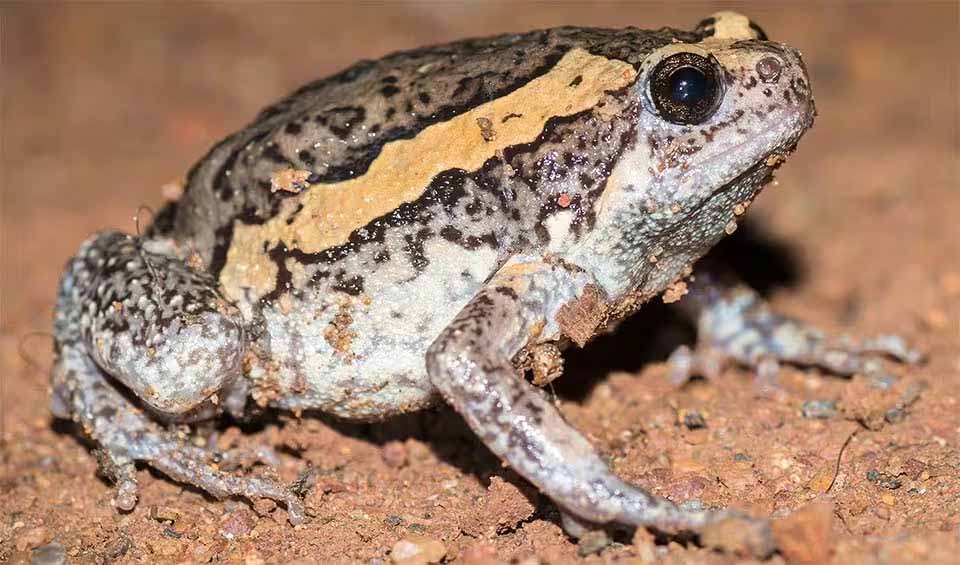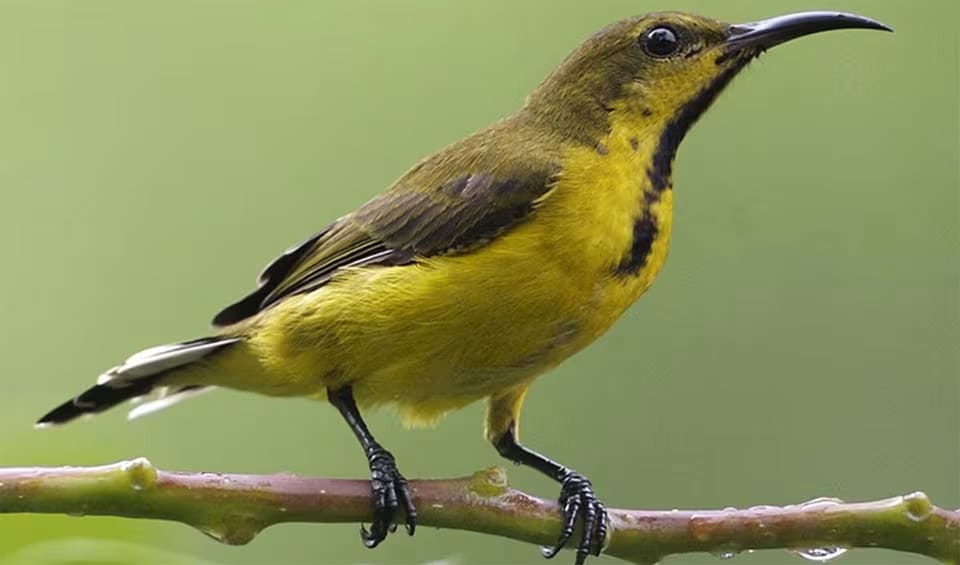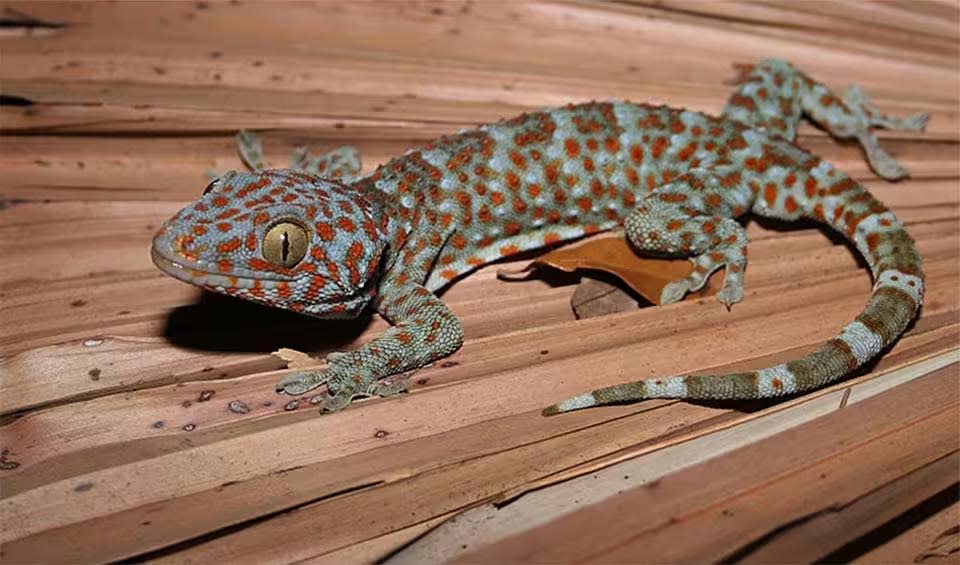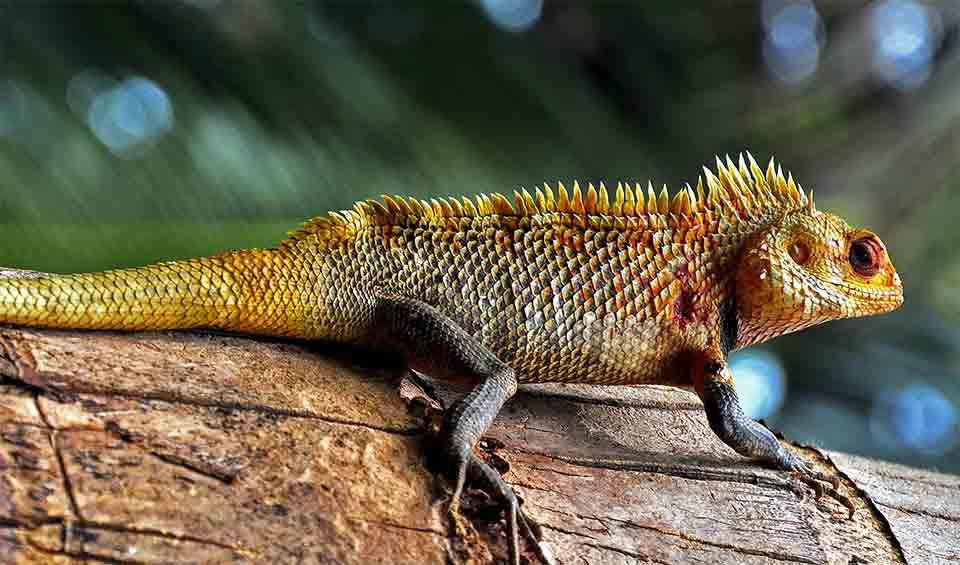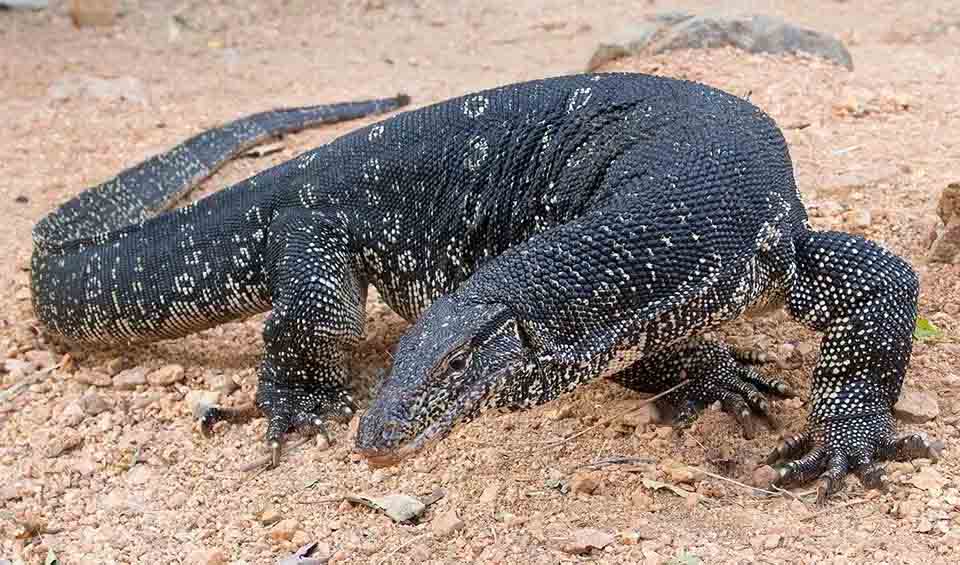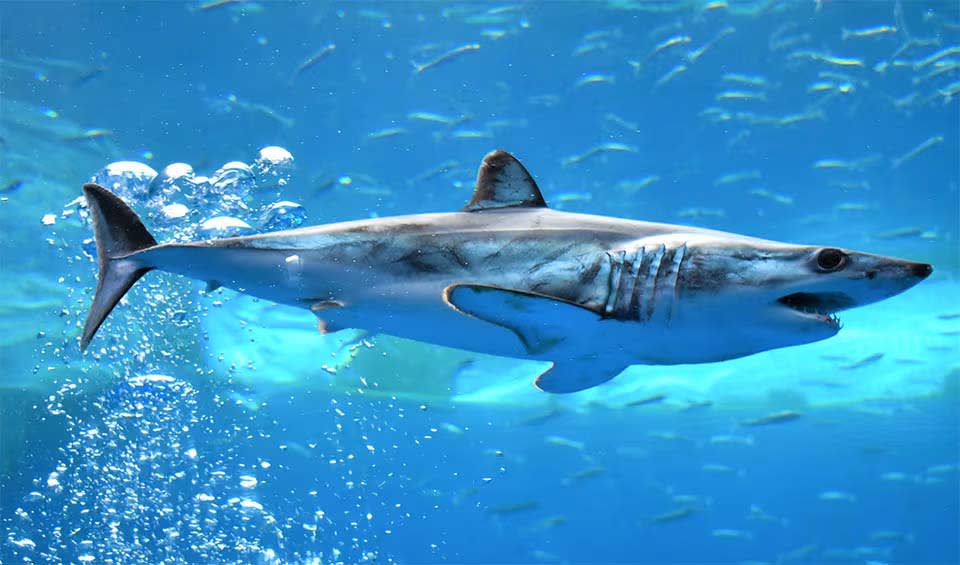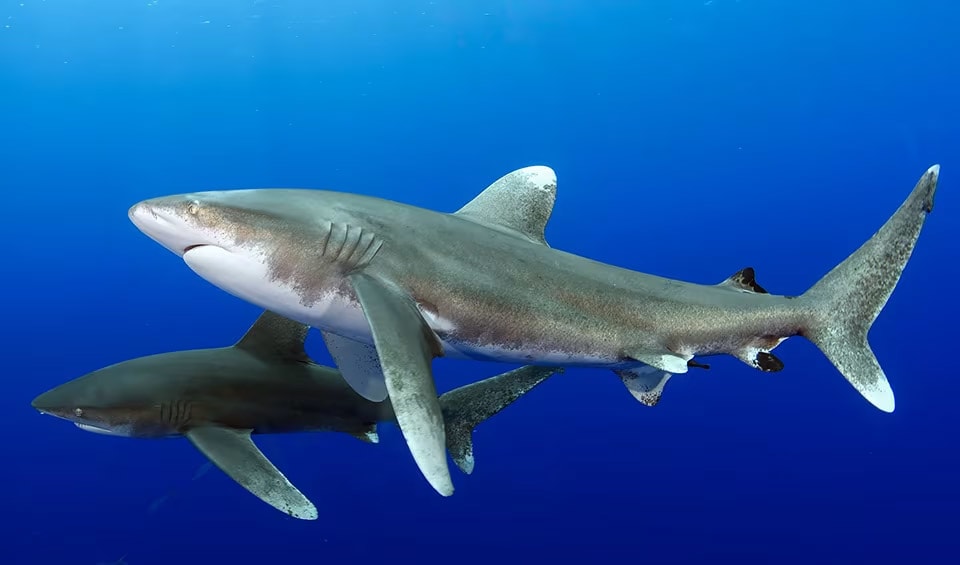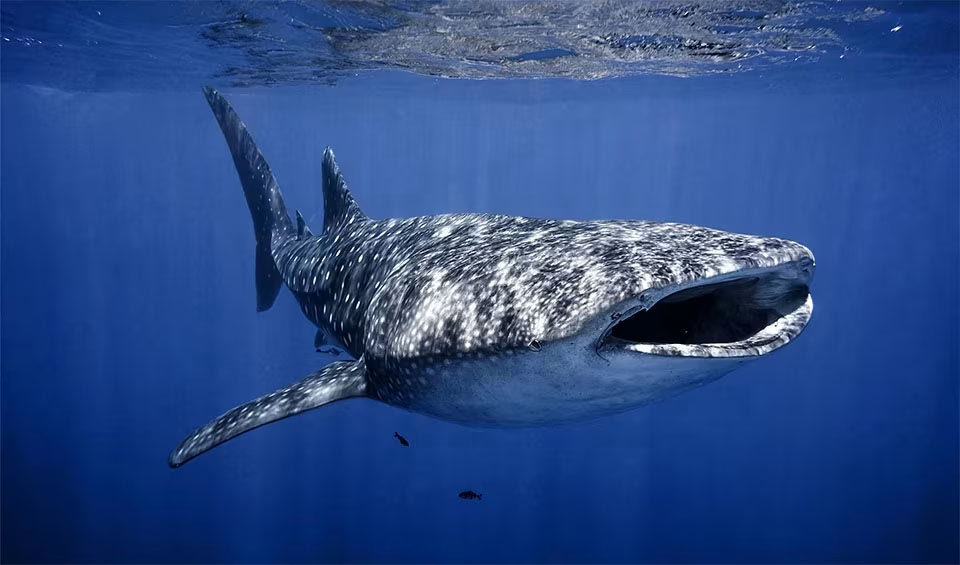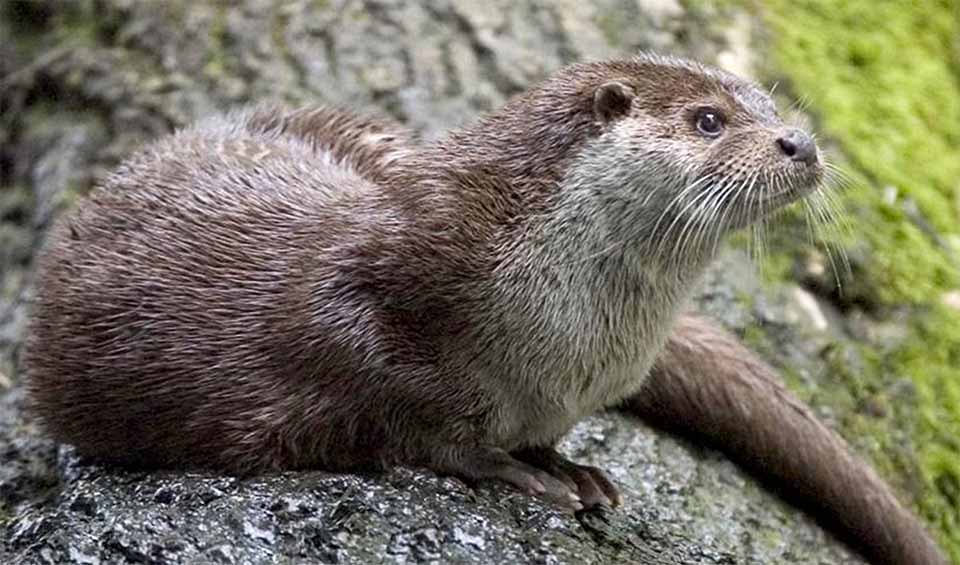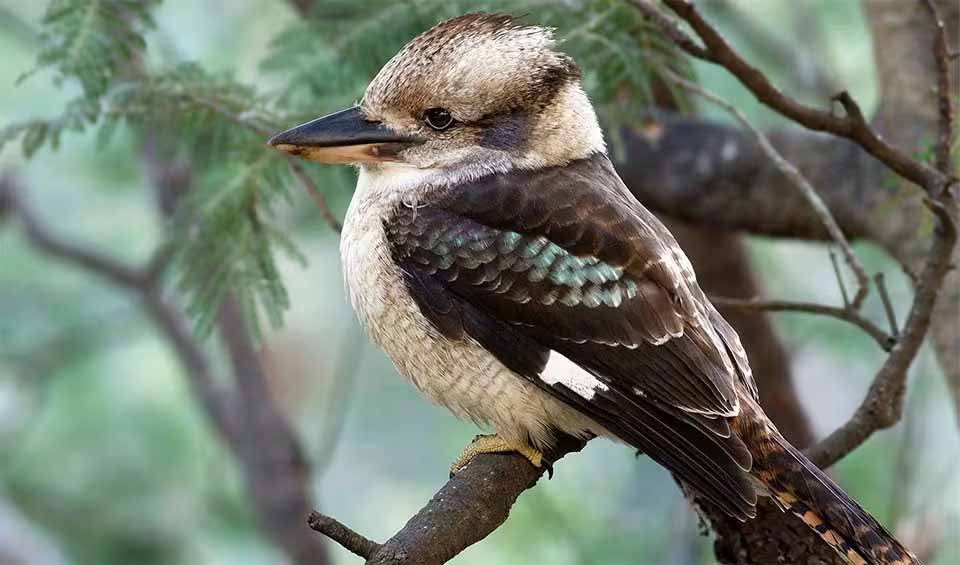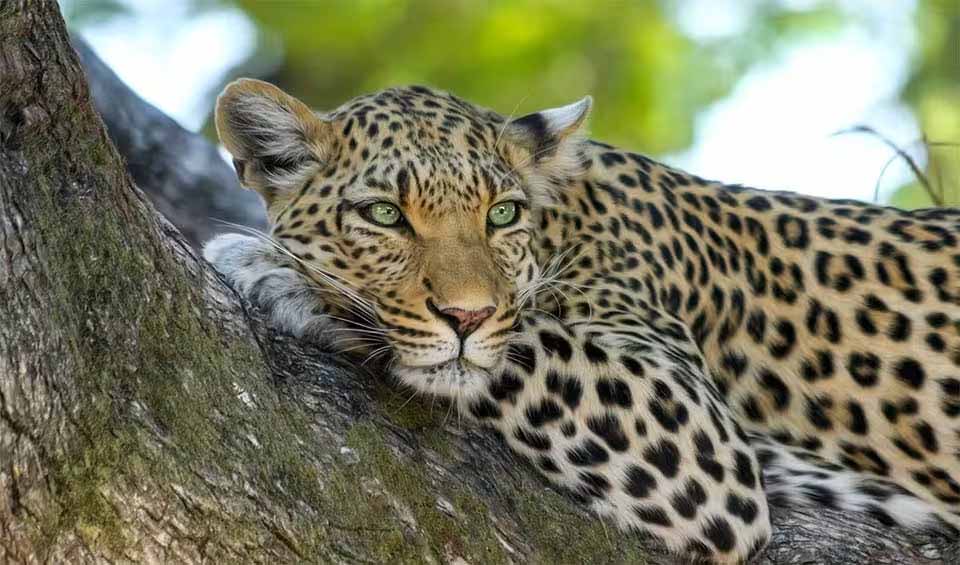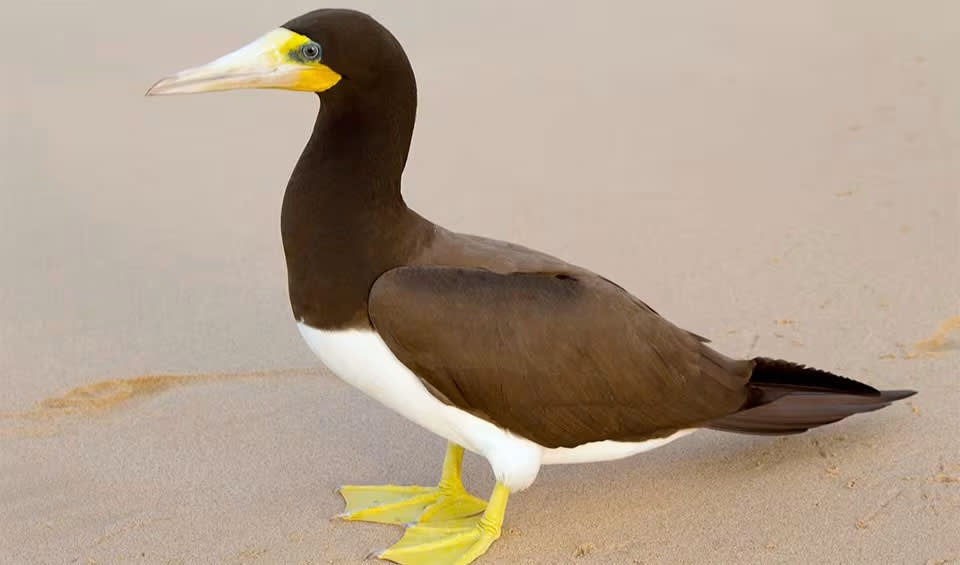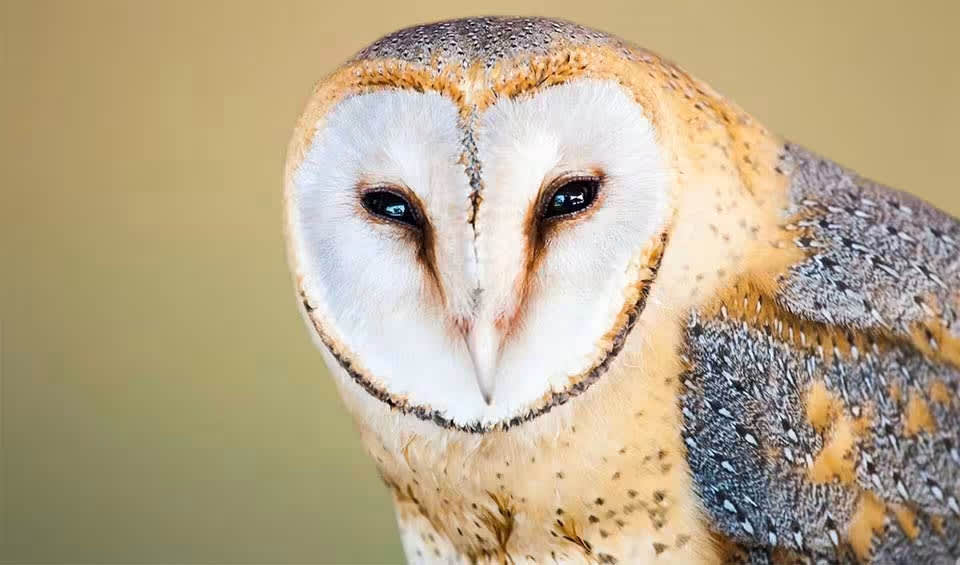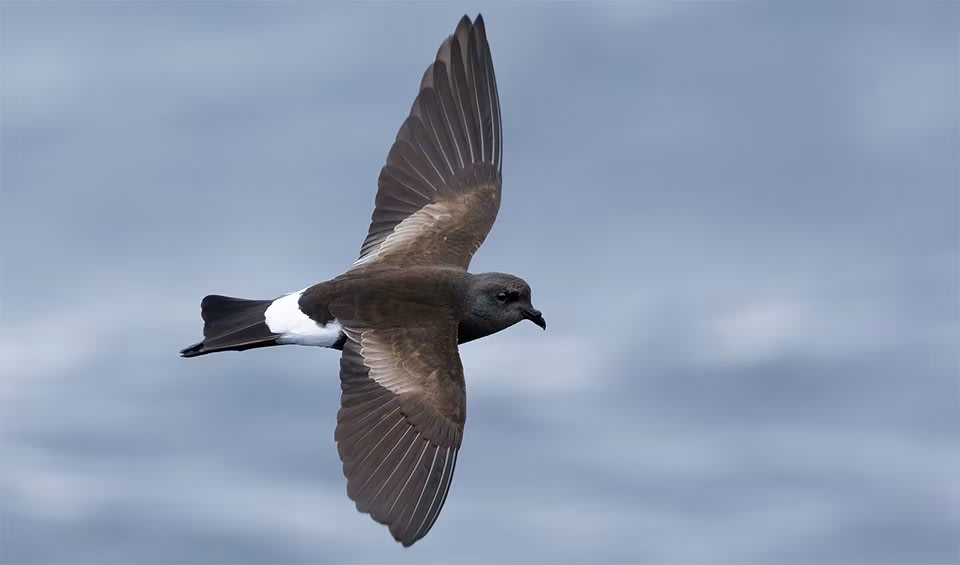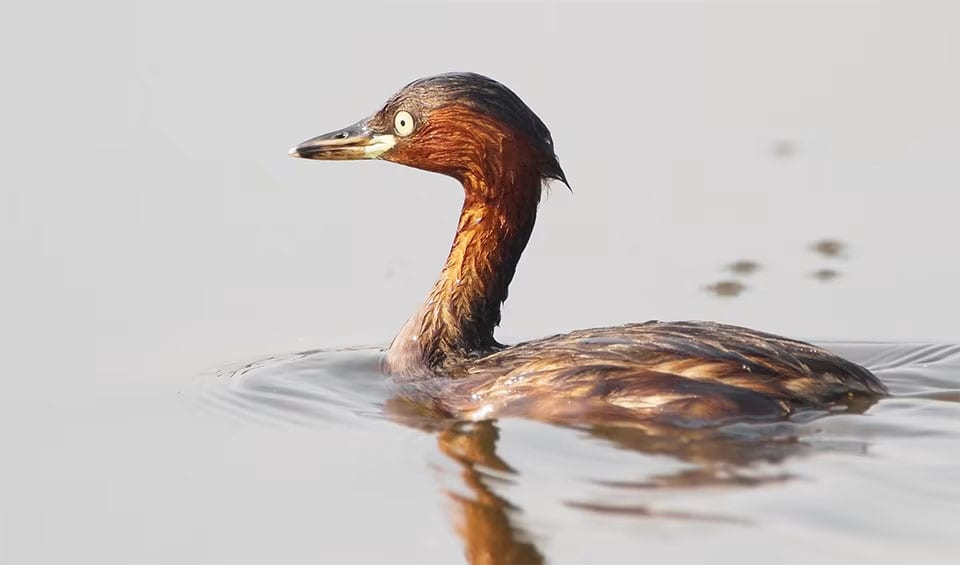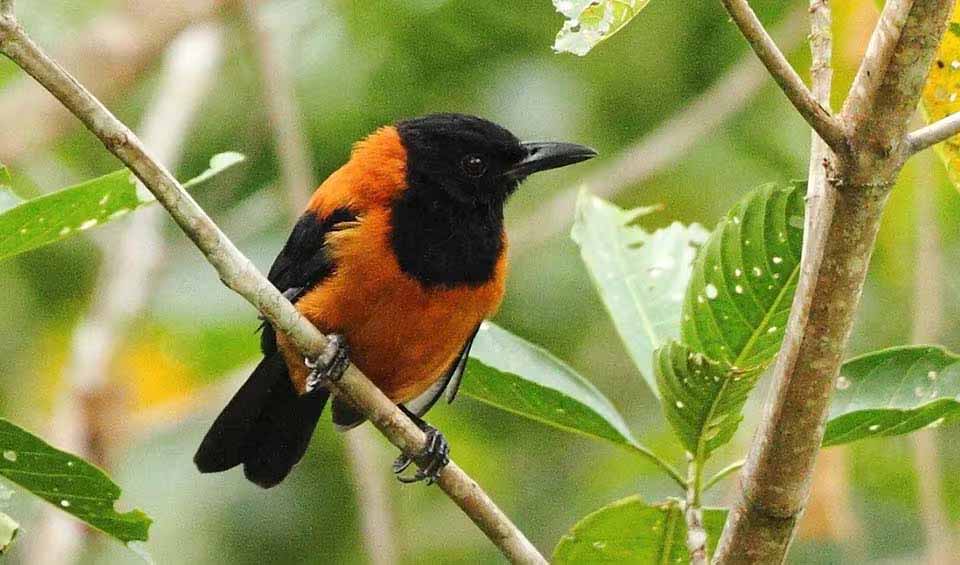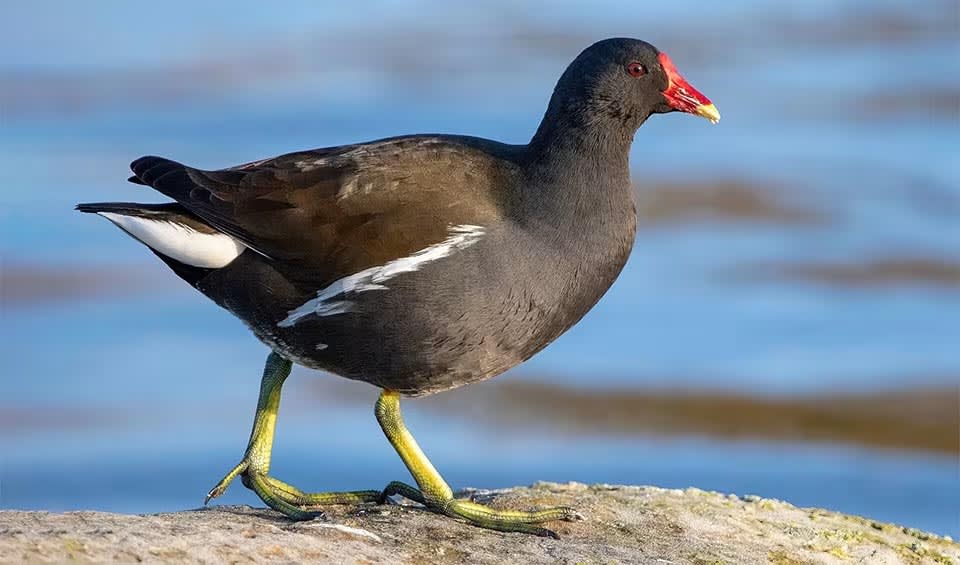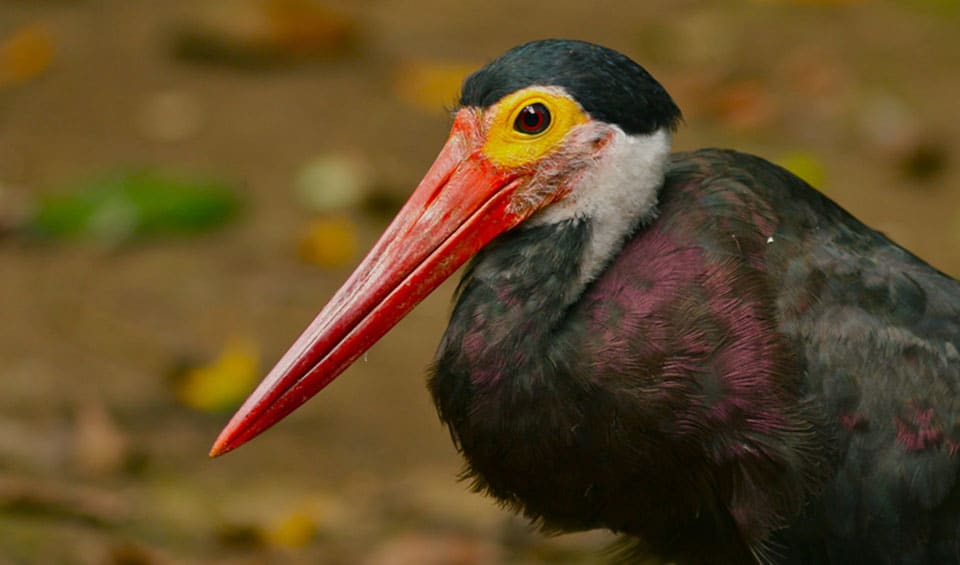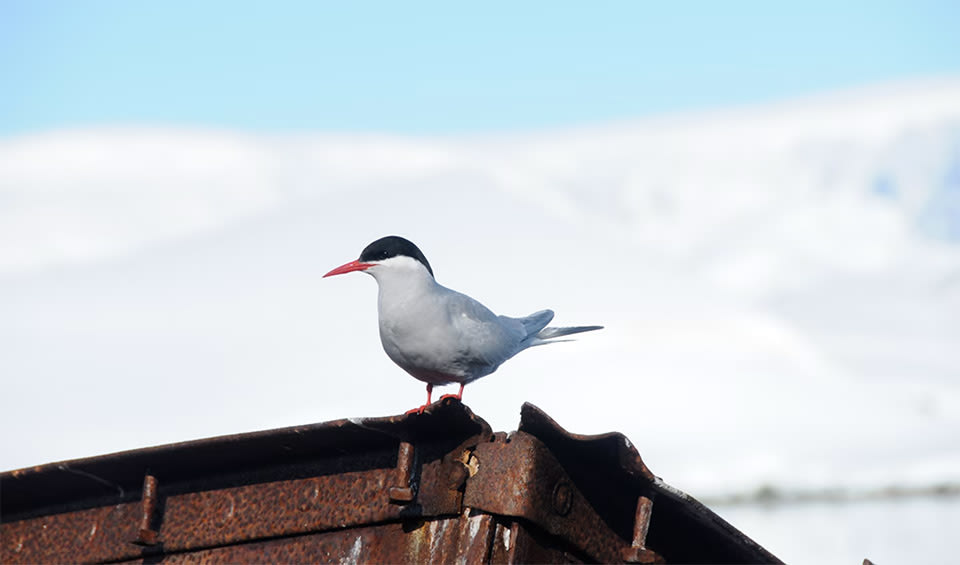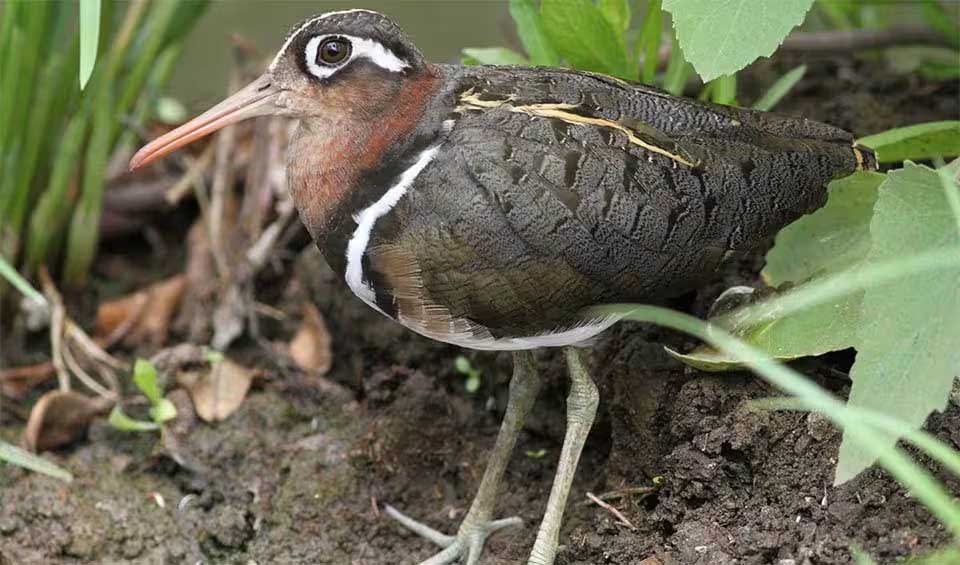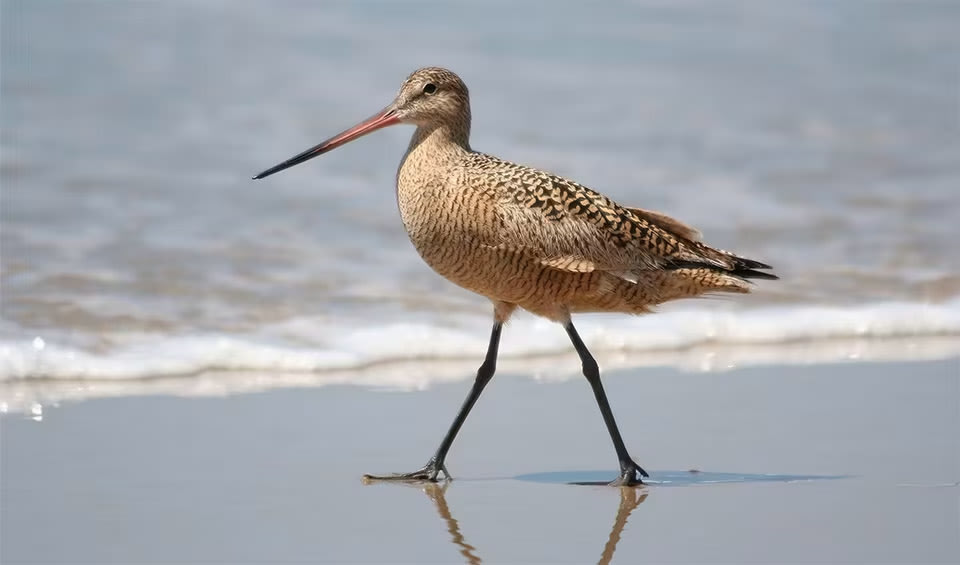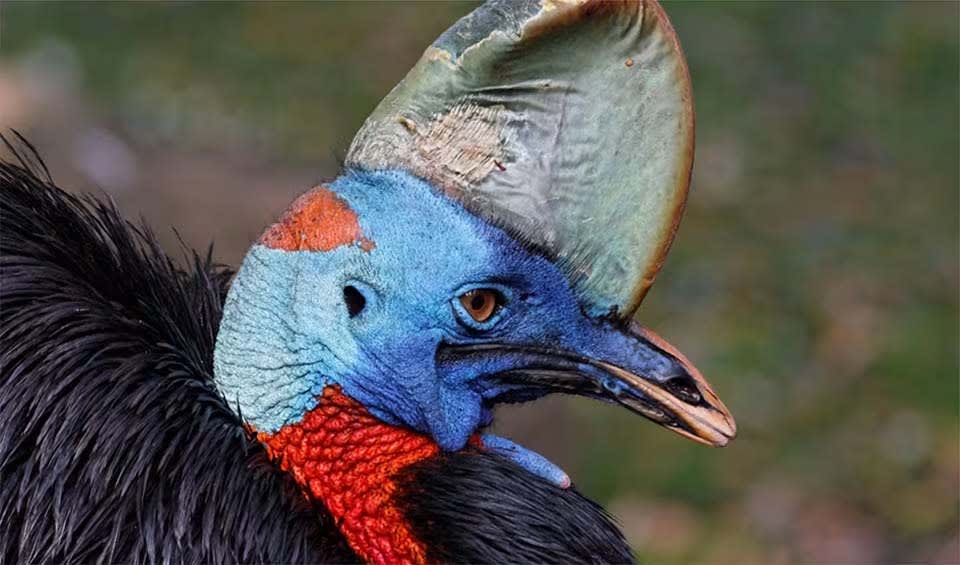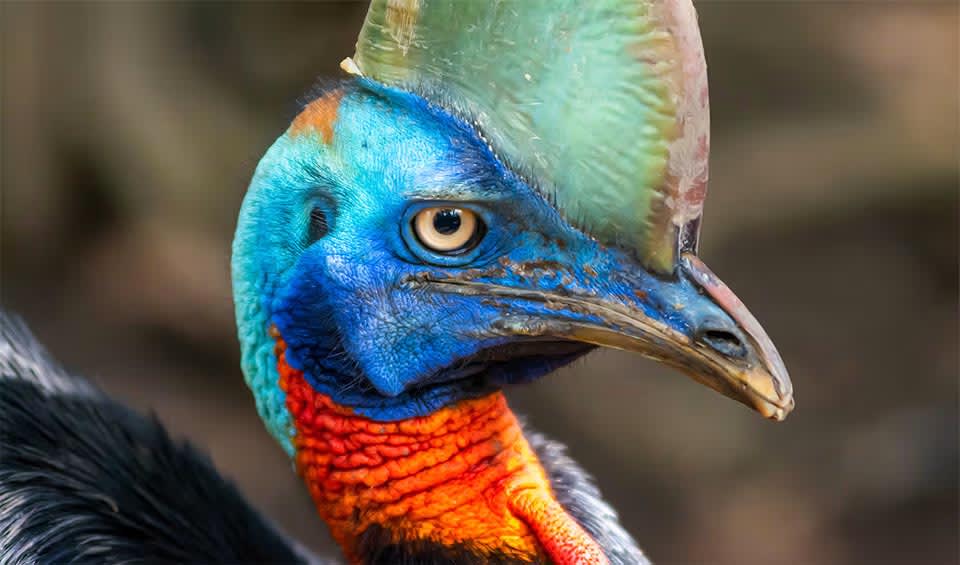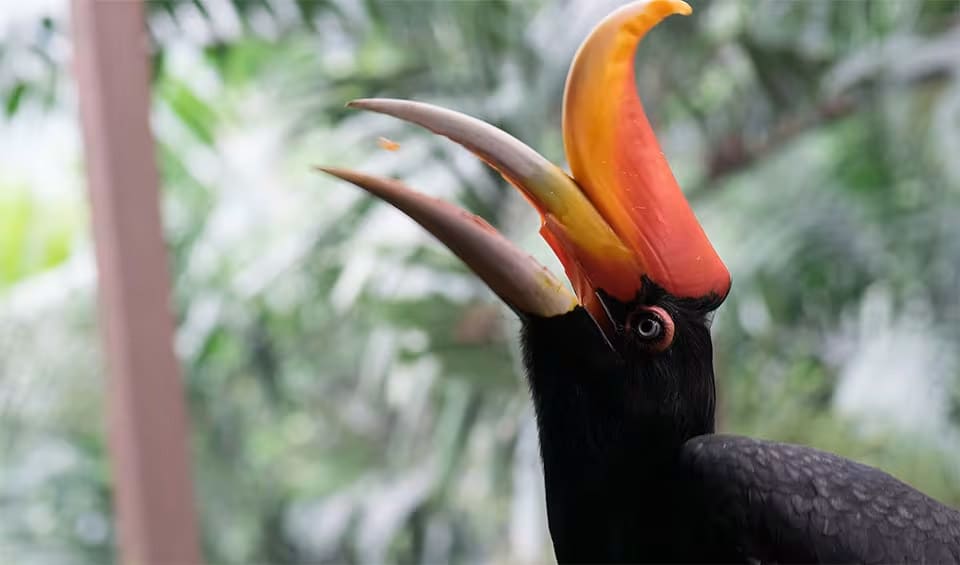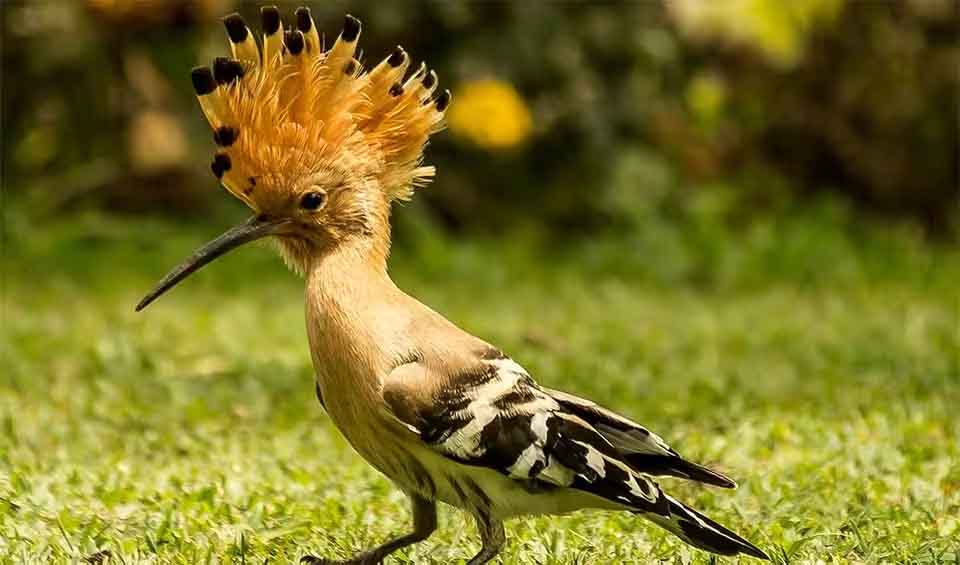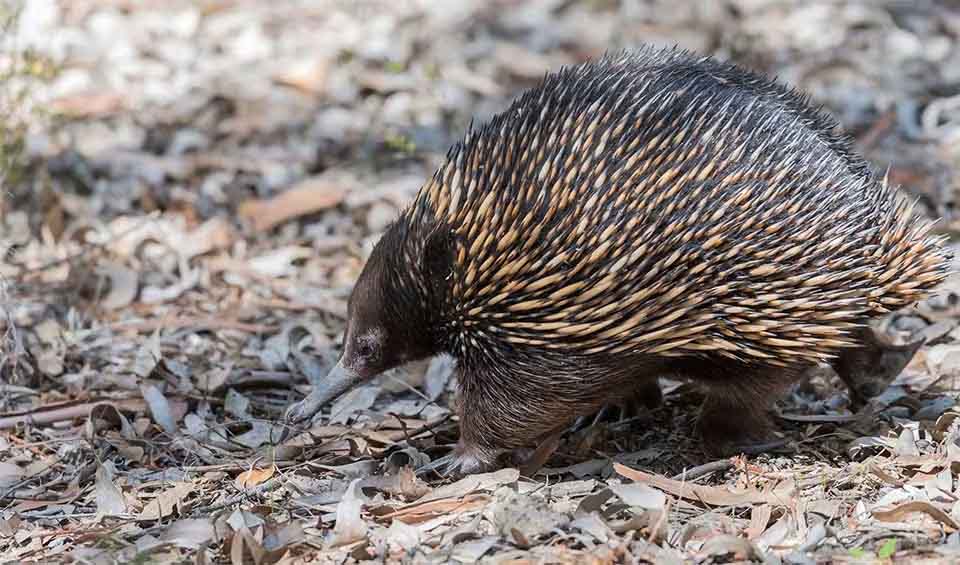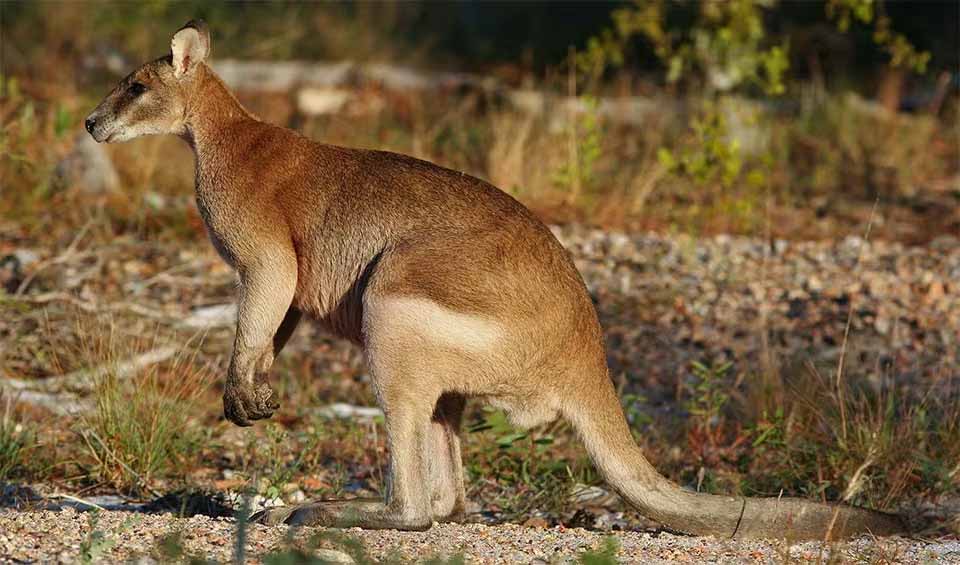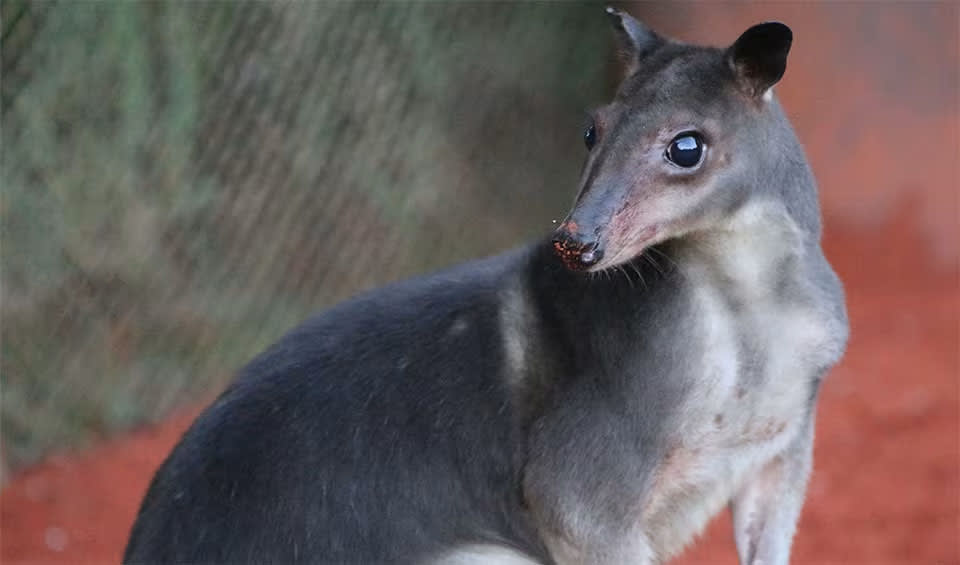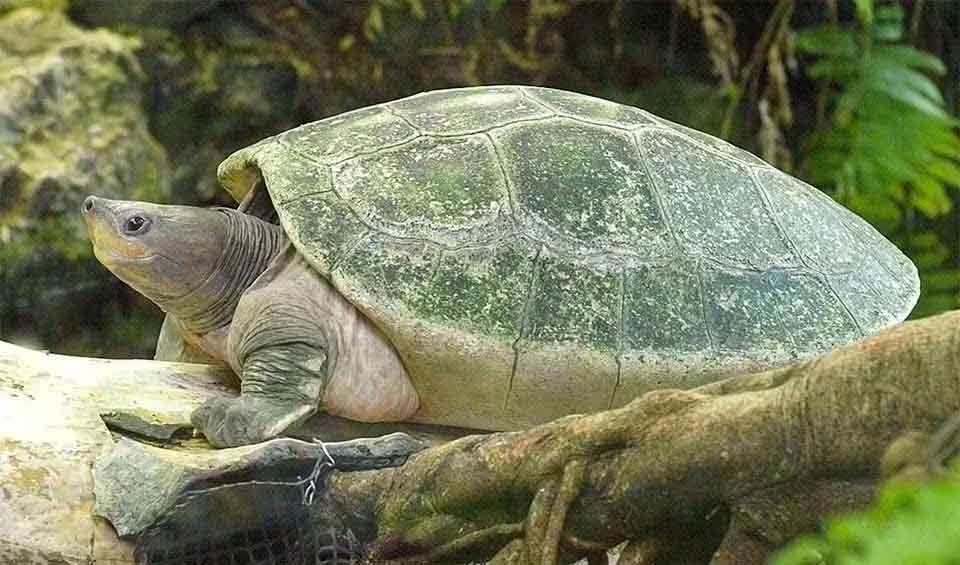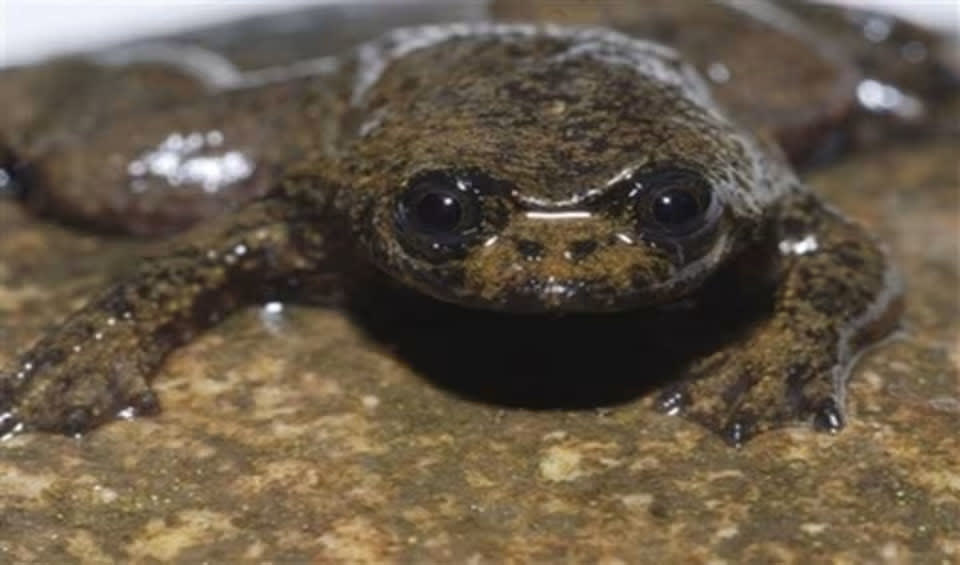Search for Indonesia
Brown rat
Can squeeze through shockingly small gaps if their head fits
Mainland serow
Bristly mane from head to back and backward-curving horns give it a tough, distinctive appearance
Barking owl
Sometimes it lets out a scream so human-like, people mistake it for someone in distress
Brown wood owl
This owl sometimes makes a dog-like “wow-wow” bark when alarmed
Southern bluefin tuna
One of the fastest and deepest-diving tunas
Largetooth sawfish
The only sawfish known to spend long stretches of its life in freshwater lakes, not just rivers or coasts
Javan slow loris
When scared, they can lick their arms and then bite, which can make their enemy sick
Black giant squirrel
Can go months without touching the ground
Red-footed booby
Goofy-looking yet evolutionarily refined for life above the waves
Chambered nautilus
With a shell that tells the story of life on Earth from hundreds of millions of years ago
Eastern long-beaked echidna
Rarely seen in the wild, which adds to its legend-like status
Scalloped hammerhead
Their skin actually darkens, just like a sunburn!
Crab-eating macaque
Despite their name,most of their diet makes up of fruits and seeds
Moor macaque
No temple loitering or snack-stealing for these classy introverts
Southern pig-tailed macaque
When it comes to food, their varied diet includes fruits, leaves, insects, and even small vertebrates
Heck’s macaque
No heckin’ way — that’s its real name!
Maroon leaf monkey
Look like they’re dressed in autumn year-round — no jungle camouflage here
Smooth-coated otter
They’re the biggest otters in Asia
Common mabuya
You might’ve already seen one in your backyard
Ruddy turnstone
They flip the script — literally!
Javan deer
Featured in Indonesian national parks and conservation symbols, making them a wildlife ambassador for the country
Coastal taipan
Often considered Australia’s most dangerous snake due to the potency of its venom
Asian palm civet
Famously linked to the production of a luxury coffee called kopi luwak
Common tree frog
Believed to have naturally spread across much of Asia
Bengal monitor
Need to escape? No problem! They can dive into water and swim powerfully using their tail like a paddle
Black swan
Once thought to be mythical by Europeans
Brahminy kite
Sometimes seen snatching food in mid-air or stealing prey from other birds — a behavior known as kleptoparasitism
Whistling kite
One of Australia’s most iconic birds of prey — and yes, it really does whistle!
Black-browed barbet
In some parts of Malaysia, they are believed to be the messengers of the gods
Black-crowned night heron
One of the most widespread and adaptable herons in the world
Javan hawk-eagle
The official bird of Indonesia, symbolizing the country’s commitment to conserving its wildlife
Amethystine python
their skin’s metallic sheen isn’t from pigment — it’s caused by microscopic structures in the scales that reflect light
Common treeshrew
Despite its name, it’s not a true shrew, and interestingly, it’s also not strictly tree-dwelling
Red-legged pademelon
Known for their “freeze and flee” behavior — staying motionless to avoid detection before suddenly bounding away into the bushes
Goodfellow’s tree-kangaroo
On flat surfaces, they often walk awkwardly or hop clumsily
Indo-Pacific finless porpoise
Can make clicking sounds up to 200 times per second to locate prey in cloudy waters where vision is limited
Siamese crocodile
On the back of their head, just behind the eyes, there’s a raised bony bump – like a miniature helmet!
Kuhl’s flying gecko
Unlike what their name suggests, these reptiles can’t fly but only leap between tree tops
Wild water buffalo
One of the largest and most powerful wild bovines in the world
Chinese crested tern
Once believed to be extinct, this elegant tern was rediscovered in 2000 after going unrecorded for decades
Asian leaf turtle
Their shell color can change slightly with age and environment
Otter civet
With an appearance that blends features of both a dog and a weasel
Common hill myna
Has an extraordinary ability to mimic human speech — better than almost any other bird on the planet
Black-backed dwarf kingfisher
One of the most visually stunning kingfisher, often described as a “flying jewel”
Australian grass-owl
This shy, nocturnal predator spends its life in open areas of grassland and cane fields but is rarely seen
Milky stork
The creamy colored stork in need of conservation
Vogelkop lophorina
An iridescent “cape” of feathers spreads from its chest, creating the illusion of a magical pocket that appears and disappears
Little tern
Renowned for their spectacular aerial displays during courtship, including steep dives and intricate flight patterns
Red junglefowl
Native to Asia where they were first domesticated, the ancestors to all our chickens
Agile gibbon
Well known for ‘singing,’ sometimes male and female partners sing duets together to drive intruders away
Indonesian pit viper
With rare blue hues, shimmering like tropical rain on leaves, make it one of nature’s most dazzling hidden treasures
Sunda pangolin
This one-of-a-kind mammal is facing a major threat – illegal hunting
Australasian swamphen
With their long legs, they navigate through dense vegetation, mud, and shallow water effortlessly
Pond slider
Got their name from their ability to quickly slide off logs or rocks into the water when they feel threatened
Burmese python
A powerful constrictor that can grow longer than a school bus!
Blood python
Frequently harvested for their skin, which is prized in the leather industry
Borneo python
Has a unique hunting strategy, often striking from a coiled positon, rather than actively pursuing prey
Sumatran short-tailed python
These snakes have a long evolutionary history, dating back millions of years
Western long-beaked echidna
One of the very few egg-laying mammals left on Earth, along with the platypus
Black-spotted cuscus
Its highly valued fur has brought it to the brink of extinction
Helmeted hornbill
Easily recognizable by its massive, ivory-colored casque, which covers its beak
Horsfield’s tarsier
Has a darker coat compared to other tarsier species
Greater coucal
Sometimes mistaken for a crow because of its size and dark coloration
Spotted dove
A delightful bird with a calm and peaceful nature
Carpet python
Despite their intimidating size, they are generally gentle and docile creatures
Red bird-of-paradise
Have long, curly tail feathers that they can spread out like a fan
Paradise flying snake
A snake that can fly? Well, not exactly fly, but glide through the air like a superhero
Western crowned pigeon
Sporting an extravagant lace-like crest atop its head and cloaked in stunning blue-gray plumage, this bird isn’t just big—it’s majestic!
Comb-crested jacana
A tiny water walker, perfectly designed for life on floating plants in swamps and lakes
Java sparrow
Small, chubby bird with big, round eyes that make it look extra cute
Red-rumped swallow
Amazing flyers — they can even drink water while they’re flying!
Australian pelican
These birds have been recorded to fly at 3000 meters (9850 ft)
Frilled lizard
It doesn’t bite or have any poison; its transformation is just a big bluff!
Sugar glider
Small, furry creatures that look like tiny squirrels
Spoon-billed sandpiper
One of the rarest birds in the world with feathers that change color depending on the season
African clawed frog
It’s a frog, but it doesn’t look like the typical frogs we think of!
Beauty rat snake
Its colorful pattern makes it stand out, earning it the name “Beauty”
Barn swallow
Most common and widely distributed swallow globally
Nicobar pigeon
Considered one of the closest living relatives to the extinct dodo bird
Wilson’s bird-of-paradise
Relatively unknown to the Western world until 1996, when David Attenborough and his crew captured its courtship dance on cam for the first time
Great hammerhead
The biggest of all the hammerhead sharks, with a massive head that looks like a giant, flat hammer
Green tree python
When they’re babies, they’re not green at all! They can be bright yellow, red, or even orange
Yellowfin tuna
Popular food fish, prized for its mild flavor and firm texture
Pantropical spotted dolphin
A champion swimmer and a social butterfly of the warm seas
Brown noddy
They bob their heads up and down as they fly, which is actually how they earned the nickname “Noddy”
Common bottlenose dolphin
Known for their acrobatic leaps, twisting and turning gracefully as they jump completely out of the water
Common dolphin
Often seen riding the bow waves of boats or performing acrobatic leaps out of the water
Australian wood frog
Papurana frogs inhabit a wide range of environments across Southeast Asia, including Indonesia, Papua New Guinea, the Philippines, and Malaysia. They are typically found in lowland tropical rainforests, swamps, marshes, and along the edges of streams and rivers. These frogs are highly adaptable, often thriving in both pristine forests and disturbed areas such as agricultural lands and suburban gardens. […]
Ruddy kingfisher
Notoriously difficult to spot due to their preference for dense, shadowy forest habitats
Water buffalo
The “living tractors of the East”—vital in traditional agriculture, particularly in Asia
Raggiana bird-of-paradise
Hailed as the national bird of Papua New Guinea
Komodo dragon
Solar powered largest living dragons
Long-nosed horned frog
The “horn” structure on its nose helps break up its outline, making it harder for predators to spot
Banded bullfrog
These frogs don’t “croak”—their call sounds more like a dog’s bark!
Black eagle
Controller of arboreal birds and mammals populations in Asia’s tropical forests
Asian arowana
Often called the “dragon fish” because of its shiny, scale-covered body and its resemblance to the mythical dragon
Bleeding toad
Its red liquid isn’t blood, but a harmless skin secretion
American bullfrog
Introduced to many regions where it is now considered an invasive species
Little egret
During breeding, they transform with elegant white plumage, adorned by decorative plumes on the head, neck, and back
Eastern cattle egret
It can catch insects that are disturbed by the animals’ movements
Eurasian kestrel
Adaptable raptor known for its hovering hunting technique and striking appearance
White-throated kingfisher
These birds are quite chatty, and their sounds are like a strong and determined rattling laugh
Irrawaddy dolphin
Have a preference for slower-moving or still waters, making them well-suited to environments like rivers and deltas
Tiger shark
They eat almost anything that comes their way – you name it, they’ll try to snack on it!
Proboscis monkey
Its exaggerated nose has been a subject of scientific intrigue and debate
Black-naped oriole
They are skilled mimics, capable of imitating various sounds from their surroundings
White-bellied sea eagle
Its broad wings enable it to glide effortlessly on air currents, often seen navigating the coastal winds
Yellow-vented bulbul
It successfully integrated itself into urban environments, often found in gardens, parks, and even city centers
Olive-backed sunbird
Using spider silk and plant materials, they construct delicate nests that hang from branches
Asian palm swift
Their narrow wings, long forked tails, and streamlined bodies are perfectly designed for high-speed maneuvers
Tokay gecko
Its large eyes are equipped with highly sensitive retinas, which allow it to see in low light conditions
Sunda striped skink
Their stripes serve as an ingenious form of camouflage, allowing them to seamlessly blend into their environment
Binturong
Despite their nickname “bearcat,” they are not related to bears or cats
Lar gibbon
Their songs echo through the forest, a duet between mates that’s both a declaration of love and a territorial announcement
Wreathed hornbill
Their beaks are tools for everything from cracking open fruits to catching insects mid-air – talk about multitasking!
Sambar deer
With its towering stature and impressive antlers, is a true king of the Asian forests
Oriental garden lizard
A lizard with vibrant hues – a living canvas of green, brown, and sometimes even blue
Asian water monitor
They can be found basking in the sun with their fellow monitors, sharing warmth and companionship
Yellow-throated Marten
Aren’t afraid of bigger animals, and they’ve been known to fight off dogs and even leopards!
Shortfin mako shark
Speed and power embodied, they rule the seas with their sleek bodies and jaw-dropping leaping prowess
Basking shark
Majestic giants of the sea, they peacefully glide through the ocean with mouths agape, filtering the waters for sustenance
Blacktip reef shark
Graceful and stealthy, these reef dwellers navigate the coral maze with finesse, showcasing their iconic black-tipped fins
Oceanic whitetip shark
Opportunistic predators of the open ocean, their aggressive and persistent feeding behaviour strikes fear into the hearts of their prey
Bull shark
Fearless and formidable, these aggressive predators command respect in the waters they roam
Whale shark
Gentle giants of the sea, with mouths wide open to filter the ocean’s bounty
Great white shark
Majestic ocean predators, embodying power, speed, and precision in their pursuit of prey
Loggerhead sea turtle
One of the largest and strongest sea turtles in the world
Hawksbill sea turtle
Its slender frame and narrow head bear a beak curved like a hawk’s, earning this marine marvel its name
Emperor angelfish
As it grows older, it undergoes a metamorphosis that is nothing short of extraordinary
Green humphead parrotfish
With a robust body adorned in iridescent hues of emerald and turquoise, it is an underwater jewel that dazzles the eye
North Sulawesi babirusa
A uniquely fascinating creature with impressive curved tusks, distinctive snout, and remarkable ability to walk on its hind legs
Salmon-crested cockatoo
This cockatoo loves coconut and works hard to get through the hard outer layer of this fruit
Common kingfisher
Possessed with special visual adaptations to catch fish
Flat-headed cat
Known to wash their food before eating it to remove any unwanted debris
Fishing cat
Only look cuddly and cute; these cats can be very aggressive!
Bay cat
Ready to go on a wild cat chase? Keep your eyes peeled for the forest ninja of Borneo!
Eurasian otter
Fiercely territorial, marking their territory with scent to communicate with other otters
Kookaburra
They are known to form cooperative breeding groups, where offspring from previous years help the parents raise the next brood of chicks
Flores man
Just over one meter (3 ft) tall, these people were one of the last human species to co-exist with us
Etruscan shrew
Meet the world’s smallest mammal but a fierce predator
Pygmy treeshrew
One of the largest members of his family, showing adaptability to habitat loss
Bornean orangutan
The most common of the three orangutans species. How common? ‘Critically endangered’ common
Leopard
Disappearing graceful shadows, this tree-climber is on the way to extinction
Javan trogon
Only a few hundred pairs are left in the world
Great cormorant
Due to their adaptability and willingness to migrate to more favorable habitats, great cormorants are found worldwide
Brown booby
An impressively acrobatic bird that can catch flying fish mid-jump
Great frigatebird
These birds spend weeks in the air and hunt, preen and even sleep while in flight
Australian masked-owl
These owls are non-seasonal breeders. They mate when food is in abundance to ensure their chicks survive
Barn owl
The most cosmopolitan of owls with home ranges extending across the globe
Wilsons storm petrel
This species is found in all world oceans except the north Pacific Ocean
Little grebe
This cute and small bird is one of the most elite hunters below the water’s surface
Red-tailed tropicbird
They dance along with their gorgeous red tails to attract partners in a faithful courtship
White-tailed tropicbird
These ocean wanderers can be spotted from a distance showing awe-inspiring aerial tricks
Glossy ibis
These birds seem to have lost their way to the beauty pageant
Great tit
The songbird that occasionally eats bats
House sparrow
The most widely dispersed wild bird
Hooded pitohui
The most poisonous living pitohui species
Eurasian coot
Like those bulging red eyes weren’t scary enough, they eat their innocent chicks when hungry
Common moorhen
Living around smelly brackish marshes is unthinkable, but these birds love their isolated habitat or don’t have a sense of smell
Masked finfoot
They are certified swimmers ruling mangroves and nearby bushes, but unfortunately, not many of them are left
King quail
The smallest of all Galliformes lives on the ground, camouflaged from predators
Green peafowl
The large forest bird is amongst the largest Galliformes; can hunt venomous snakes!
Black-thighed falconet
The smallest raptor of the entire world, being smaller than a house sparrow
Peregrine falcon
At the speed of over 321 km/h (200 mph), this bird outraces a Formula1 car
Fan-tailed cuckoo
The yellow eye-ring cuckoo of Australia
Pink-necked green pigeon
One of the most beautiful pigeons
Storm’s stork
Disappearing rarest stork
Black-winged stilt
Elegant long-legged wader, common almost worldwide
Sumba buttonquail
A prime example of a bird that was unable to adapt to changes brought over by humans
Arctic tern
This bird can give any cross-country runner a run for their money
Common tern
This bird holds the record of the longest distance flown by any bird in recorded history
Greater painted-snipe
Looks no less than a renaissance masterpiece
Black-tailed godwit
The most elegant of all godwit species
Dwarf cassowary
The dwarf ratite from the mountain forests
Northern cassowary
Single-wattled yellow-necked one-horned ratite
Southern cassowary
This heavyweight champion is the heaviest Asian and Australian living bird
Great eared-nightjar
A nocturnal bird is fooling everybody with a tuft of feathers on its head resembling ears
Great hornbill
They’re amazingly human-friendly — oh, but do we call it a friendship if we cost their population the chance to survive
Rhinoceros hornbill
35 years. That’s how long it can live in captivity. But, does that equal its time in the rainforests of Borneo, among high canopy greens?
Eurasian hoopoe
Dependable wings and a muscular build. Nope, we aren’t talking about the next Redbull ad campaign
Cotton pygmy goose
Smaller than most iPads, meet the tiniest duck in the world
Magpie goose
The prime living example of an ancient fossil with only one species left to its name
Western marsh harrier
The yellow-eyed devil
Short-toed snake eagle
A magnificent migratory bird with long, broad wings and a short tail that sings in the form of musical whistles
Osprey
One of only six land-birds with a cosmopolitan distribution habituating all continents except Antarctica
Wedge-tailed eagle
Australia’s largest bird of prey and one of the most impressive raptors in the world
Sunda flying lemur
The common name was a smokescreen that confuses people because they are not a lemur and do not fly
Asian elephant
Largest land mammal in Asia here!
Javan rhinoceros
The rarest and most threatened of five extant rhinoceroses’ species
Short-beaked echidna
Has tiny muscle bundles connected to the bottom of each spine so that the spine’s movement and direction can be controlled
Sumatran rhinoceros
The only Asian rhino with two horns is the world’s smallest rhino
Malayan tapir
The largest tapir species in the world and the only one found in Asia
Pen-tailed treeshrew
A drunkard – the only known mammal that consumes alcohol every night from fermented nectar of the bertam palm
Sumatran striped rabbit
Considered the most elusive and rarest rabbit in the world, with only a few sightings in the wild
Sunda stink badger
Dens have an unpleasant smell that resembles Paku sigung (the stink badger fern) and can be easily confused
Marbled cat
When standing or resting, they are characterized by their arched back
Asian golden cat
One of the least studied cats in tropical Asia; there is still a lot to discover!
Sunda clouded leopard
Due to their fur being darker with a smaller cloud pattern than clouded leopards, they were classified as a new species in 2006
Sun bear
The smallest of bears is slowly vanishing from tropical forests of Southeast Asia
Dhole
Extinct in Europe and North America, probably due to landscape changes during the ice age, and currently can only be found in Asia
Agile wallaby
The white stripe near the hip is the identification mark for this species
White-striped dorcopsis
Common in the tropical forests of northern Indonesia and Papua New Guinea
Dingiso
About 80 % of the population of these adorable kangaroos has suffered in the past 30 years
Striped possum
Solitary, nocturnal; builds its nest in tree branches
Sulawesi bear cuscus
Endemic to Sulawesi, Indonesia; threatened by collection for the pet trade and deforestation
Wild boar
They have an elongated and elastic snout that can be used to dig out roots and bulbs
Siamang
Defend their territory with a singing ritual that starts at about 9 am each day and lasts for an hour
Roti snake-necked turtle
A turtle with a neck that resembles… Yes, you guessed it, a snake!
Leatherback sea turtle
The mysterious diver of the ocean is the largest and only sea turtle without a hard shell and scales
Pig-nosed turtle
Possesses an elongated fleshy proboscis, resembling a twin-snorkel, that extends above the water surface for breathing
Painted terrapin
Named for the presence of a red strip on their shell during breeding season!
Sumatran orangutan
Once distributed over the entire island of Sumatra, now restricted to the north of the island
Tapanuli orangutan
The frizzy-haired, mustached Tapanuli orangutan is the most endangered great ape on Earth
Spiny turtle
The thorny devil of the turtles
Yellow-bellied sea snake
The most widespread species of snakes on earth are found throughout the Indian and Pacific Oceans and from Africa to Central America
King cobra
Largest living venomous snake reaching lengths of up to 5.7 meters or 8.5 feet
Reticulated python
Largest living snakes on the earth, reaching lengths of up to 7 meters of 23 feet
Tomistoma
‘Tomistoma,’ the scientific name of false gharial, literally means ‘sharp mouth’
New Guinea crocodile
One of the few crocodilian species whose wild numbers have stabilized
Saltwater crocodile
Largest of all living reptiles and the animal most likely to eat a human
Bornean flat-headed frog
This squishy-looking creature is the only lungless species of frog in the world
White-lipped tree frog
These gorgeous frogs are the world’s largest tree frogs and can grow up to 14cm or 5.5 inches!

